Welcome
About Elliott Zuckerman
Prior to his passing, Dr. Zuckerman was a Tutor Emeritus at St John’s College in Annapolis, where he began teaching in 1961. Before that, he taught at Columbia and at the New School.
Born in Brooklyn in 1930, his study of painting began at the High School of Music and Art in New York City, where, while continuing to study music elsewhere, he matriculated as an art student. He went on painting while at Cambridge, and participated in a series of exhibits. On return from Europe, in did not paint for many years, but took it up again in the mid nineteen-seventies, starting out with portraits, which he had never done before. In 1980, he had a show of thirty portraits and self-portraits. By then he was also painting still-lifes and landscapes, exhibiting frequently at the Maryland Federation of Art. In 2010, he had a highly praised one-man show at the Maryland Hall for the Creative Arts.
His paintings are in many private collections in Annapolis, Chicago, New York, and throughout the country, and in Europe.
Dr. Zuckerman’s collection of his work was donated to Touchstones Discussion Project in celebration of his long-time friend and colleague, Howard Zeiderman, and in honor of Touchstones Legacy Campaign, begun in 2018. Elliott wished for proceeds from the sales of his paintings to support Touchstones organizationally and programmatically, as he believed strongly in the power of discussion to build connections and deepen understanding among all people.
The Music You Hear
Elliott Zuckerman was not only an accomplished painter, writer, and educator, but also a gifted musician. The song you’re hearing on our homepage (if your volume is on!) is “Where the Poet Lives”. “Where the Poet Lives” is a poem Elliott wrote which he set to piano and tenor and recorded with Eric Stoltzfus on vocals and Elliott himself playing the piano. “Where the Poet Lives” is one of six poems set to song that Elliott and Eric recorded together in their collection “Six Songs”.
Self-portrait as Landscape. 1999.
Oil on canvas with charcoal. 30”l x 24”w
A Walk Through the Gallery
Exhibit curator, Sigrid Trumpy, met with fellow artists Neil Harpe and Cassandra Kabler to explore this show together. We hope you’ll enjoy their walk through the gallery.
“The puzzle is in the title: where do you see the landscape in this painting? The self-portrait here is in transition with landscape. Although this is a straight-on, very direct portrait, it is as if you are looking into his mind to a memory of a landscape.”
-Cassandra Kabler
Another Frame of Reference
Each of us brings our own perspective as we engage with the works in this show. Included here are additional references we hope enrich and expand your experience.
“Posing” by Elliott Zuckerman
Someone must sit for me, for I can’t pose
My riddles to a plaster god,
One of those studio Apollos,
A paradigm too Greek to grapple with.
Imaginings must feed
Upon a blemish in the gaze,
Follow the misdirections of the brow,
Thrive on the dissonance of chin and cheek.
There must be something there that’s almost mine,
Its nature specified by whether nose
Is pug, or African, or aquiline.
Ready for fleshing from the loaded brush,
The lip should be a wish
That’s picturable in private, the orange spot
In my Corot, the apricot
In fields of green.
As for the rest,
O you who pose while I predict,
Your ears have touched me far beyond the act
Of touching. They deflect,
Waiting like pets to be caressed.
(from “The Shape of an Ear”, a collection of poems by Elliott Zuckerman, 2002.)
Dark Waterfall. 2018.
Oil on canvas with charcoal. 24”l x 36”w
A Walk Through the Gallery
Exhibit curator, Sigrid Trumpy, met with fellow artists Neil Harpe and Cassandra Kabler to explore this show together. We hope you’ll enjoy their walk through the gallery.
“Are we looking from inside through a window to outside? Immediately notable is the use of a darker palette than some of Elliott’s earlier works.”
-Cassandra Kabler
“I am drawn to both the palette and the use of line and shapes in Dark Waterfall.”
-Neil Harpe
Another Frame of Reference
Each of us brings our own perspective as we engage with the works in this show. Included here are additional references we hope enrich and expand your experience.
Chopin’s Étude Opus 10 No. 1, “Waterfall”
Mountains: Lines and Colors. 2019.
Oil on canvas with charcoal. 24”l x 30”w
A Walk Through the Gallery
Exhibit curator, Sigrid Trumpy, met with fellow artists Neil Harpe and Cassandra Kabler to explore this show together. We hope you’ll enjoy their walk through the gallery.
“The use of space is cubist in nature: space is flipped around, there is a strong sense of the negative space and line is used to emphasize the overall composition. The structure of the painting is strengthened by the line and the overall space is compressed. Is there a passageway to another space? Are there floating spaces? The painting brings up these questions.”
-Cassandra Kabler
“Here again the linear quality speaks to me, and there is a similar approach as in Untitled 2011.”
-Neil Harpe
Another Frame of Reference
Each of us brings our own perspective as we engage with the works in this show. Included here are additional references we hope enrich and expand your experience.
Winter Evening in Yosemite Valley
Fruit at the Window #11. 1998.
Oil on canvas with charcoal. 24”l x 36”w
A Walk Through the Gallery
Exhibit curator, Sigrid Trumpy, met with fellow artists Neil Harpe and Cassandra Kabler to explore this show together. We hope you’ll enjoy their walk through the gallery.
“There is more space to breathe in this painting than in some of the others, such as Dark Waterfall 2018. The fruit could almost be musical notes.”
-Cassandra Kabler
Another Frame of Reference
Each of us brings our own perspective as we engage with the works in this show. Included here are additional references we hope enrich and expand your experience.
Excerpt from Wassily Kandinksy’s ‘Concerning the Spiritual In Art’
Untitled. 2011.
Oil on canvas with charcoal. 24”l x 36”w
A Walk Through the Gallery
Exhibit curator, Sigrid Trumpy, met with fellow artists Neil Harpe and Cassandra Kabler to explore this show together. We hope you’ll enjoy their walk through the gallery.
“This offers a sense of landscape and is reminiscent of the Russian Expressionist Alexej von Jawlensky, who was a member of the Der Blanc Reiter Group.”
-Cassandra Kabler
Another Frame of Reference
Each of us brings our own perspective as we engage with the works in this show. Included here are additional references we hope enrich and expand your experience.
“118” by Elliott Zuckerman
A twist of the wrist can move a tree.
To mark the order of things that are
already there, or change what’s almost there,
Discerning hand shows moral sympathy.
(from “Poems and Observations” by Elliott Zuckerman)
Excerpts from Letters by Paul Cézanne
“Treat nature by means of the cylinder, the sphere, the cone, everything brought into proper perspective so that each side of an object or a plane is directed towards a central point. Lines parallel to the horizon give breadth . . . Lines perpendicular to this horizon give depth. Now, we men experience nature more in terms of depth than surface, whence the need to introduce into our vibrations of light, represented by the reds and yellows, a sufficient quantity of blue tones, to give a sense of atmosphere.”
-Paul Cézanne, 1904
Monty. 2015.
Oil on canvas with charcoal. 30”l x 24”w
A Walk Through the Gallery
Exhibit curator, Sigrid Trumpy, met with fellow artists Neil Harpe and Cassandra Kabler to explore this show together. We hope you’ll enjoy their walk through the gallery.
“Elliott’s signature portraiture style combines expressive linear drawing with luscious color and brushwork. The line quality in much of Elliott’s work can be authoritative but often combined with a playful element as well. This is a very expressive and evocative painting in which the artist has lovingly captured his subject’s essence. Of all of Elliott Zuckerman’s portraits, Monty is my favorite.”
-Neil Harpe
Another Frame of Reference
Each of us brings our own perspective as we engage with the works in this show. Included here are additional references we hope enrich and expand your experience.
“Sonnet 7: How soon hath Time, the subtle thief of youth” by John Milton
How soon hath Time, the subtle thief of youth,
Stol’n on his wing my three-and-twentieth year!
My hasting days fly on with full career,
But my late spring no bud or blossom shew’th.
Perhaps my semblance might deceive the truth
That I to manhood am arriv’d so near;
And inward ripeness doth much less appear,
That some more timely-happy spirits endu’th.
Yet be it less or more, or soon or slow,
It shall be still in strictest measure ev’n
To that same lot, however mean or high,
Toward which Time leads me, and the will of Heav’n:
All is, if I have grace to use it so
As ever in my great Task-Master’s eye.
Fruit at the Window #9 (jagged lines). 1998.
Oil on canvas with charcoal. 24”l x 36”w
A Walk Through the Gallery
Exhibit curator, Sigrid Trumpy, met with fellow artists Neil Harpe and Cassandra Kabler to explore this show together. We hope you’ll enjoy their walk through the gallery.
“The (titled) subject has all but disappeared in this painting, submerging into pure abstraction and space that is layered and supercharged with color, overlaid and interrupted with black lines that hint at his subject and what he envisioned. Attachment to the subject is almost gone, with just peeking hints of fruit or flower or reflected self-portrait.
The relationship of foreground to background is unsettled.
I am drawn to the way Elliott applied his paint in Fruit at the Window #9, laying it down mater-of-factly, not to be distracted from his vision— yet those places in the painting where his paint has partially covered the line are the most intriguing.”
-Sigrid Trumpy
Another Frame of Reference
Each of us brings our own perspective as we engage with the works in this show. Included here are additional references we hope enrich and expand your experience.
Gauguin‘s “Bowl of Fruit and Tankard before a Window” 1890
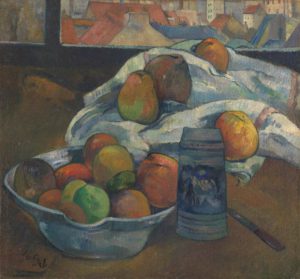
Garden. 2018.
Oil on canvas with charcoal. 24”l x 30”w
A Walk Through the Gallery
Exhibit curator, Sigrid Trumpy, met with fellow artists Neil Harpe and Cassandra Kabler to explore this show together. We hope you’ll enjoy their walk through the gallery.
“In Garden, it feels like we are going along a path and glimpsing a garden through it. It is a coming together of being in a garden, where Elliott has thrown in one color over the other. There is a sense of simultaneous spaces, all of which creates an experience of being in a patio garden.”
-Cassandra Kabler
“I found the image very restful and in particular love the colors that Elliott uses. Green is not a color you often see as the dominant color in an artwork. Also, the center vertical negative spaces give the appearance of looking through to the sky. I do not see a garden, I see colors I might see in a garden, which creates the restfulness.”
-Neil Harpe
Another Frame of Reference
Each of us brings our own perspective as we engage with the works in this show. Included here are additional references we hope enrich and expand your experience.
“122” by Elliott Zuckerman
Gardens lie buried, there, in an unlearned language.
A few stray words are fragments of flowers saying
that nothing ever is over. Look for the doorway
hidden behind feathery stretches of hedges.
(from “Poems and Observations” by Elliott Zuckerman)
Delacroix/Chopin. 1995.
Oil on canvas with charcoal. 30”l x 24”w
A Walk Through the Gallery
Exhibit curator, Sigrid Trumpy, met with fellow artists Neil Harpe and Cassandra Kabler to explore this show together. We hope you’ll enjoy their walk through the gallery.
“There is little doubt that Elliott was experiencing the music of Chopin while painting Delacroix/Chopin, as you can feel the sound in the lines that he used. Perhaps in many of his paintings Elliott’s love and expertise in the field of music had a large influence.”
-Sigrid Trumpy
Another Frame of Reference
Each of us brings our own perspective as we engage with the works in this show. Included here are additional references we hope enrich and expand your experience.
“Portrait of Chopin” by Delacroix
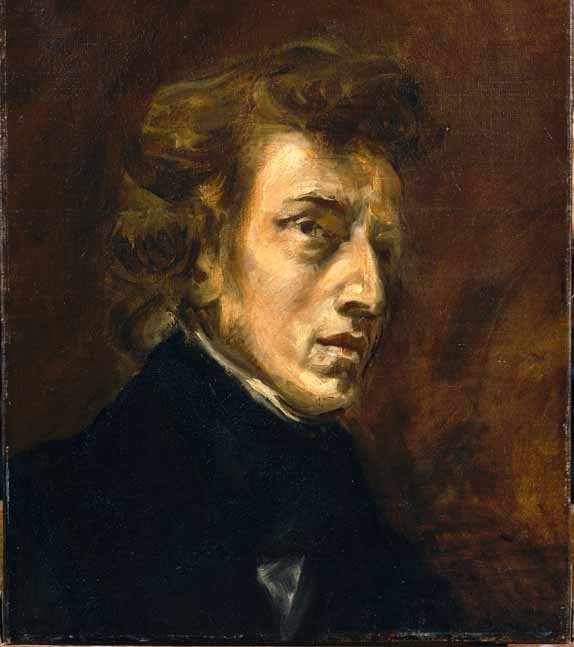
Fruit, city-scape, and sky. 1998-99.
Oil on canvas with charcoal. 24”l x 36”w
A Walk Through the Gallery
Exhibit curator, Sigrid Trumpy, met with fellow artists Neil Harpe and Cassandra Kabler to explore this show together. We hope you’ll enjoy their walk through the gallery.
“Here is a cityscape and sky: the bigger blocks of color are notable. Elliott uses them in layers with an erratic grid. Overall the painting has an intellectual presence as opposed to a literal interpretation.”
-Cassandra Kabler
“There is an expression of intense movement in this painting.”
-Neil Harpe
Another Frame of Reference
Each of us brings our own perspective as we engage with the works in this show. Included here are additional references we hope enrich and expand your experience.
Bach, synthesized “Air on a G String” from Orchestral Suite No. 3
Self-portrait with orange background. 1994-95.
Oil on canvas with charcoal. 30”l x 24”w
A Walk Through the Gallery
Exhibit curator, Sigrid Trumpy, met with fellow artists Neil Harpe and Cassandra Kabler to explore this show together. We hope you’ll enjoy their walk through the gallery.
“This painting has a clean atmosphere and color. The brushstrokes are deliberate and conscious.”
-Cassandra Kabler
“I love his use of line and great sense of color. The lines are masterful and playful. There is a varied thickness, and the painting is reminiscent of Diebenkorn. Elliott’s work has a cubist lineage, but in a more contemporary interpretation. This painting is unequal.”
-Neil Harpe
Another Frame of Reference
Each of us brings our own perspective as we engage with the works in this show. Included here are additional references we hope enrich and expand your experience.
The Tristan Chord
Figuration #13. 1997.
Oil on canvas with charcoal. 24”l x 36”w
A Walk Through the Gallery
Exhibit curator, Sigrid Trumpy, met with fellow artists Neil Harpe and Cassandra Kabler to explore this show together. We hope you’ll enjoy their walk through the gallery.
“This is a very lyrical painting, reminiscent of Paul Klee. There appears to be a female figure with tipped head and a striped cape.”
-Sigrid Trumpy
Another Frame of Reference
Each of us brings our own perspective as we engage with the works in this show. Included here are additional references we hope enrich and expand your experience.
Euclid’s “Elements”, Book I. Proposition 13
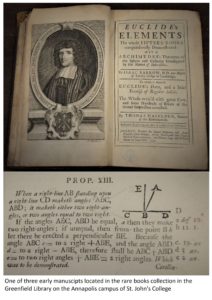

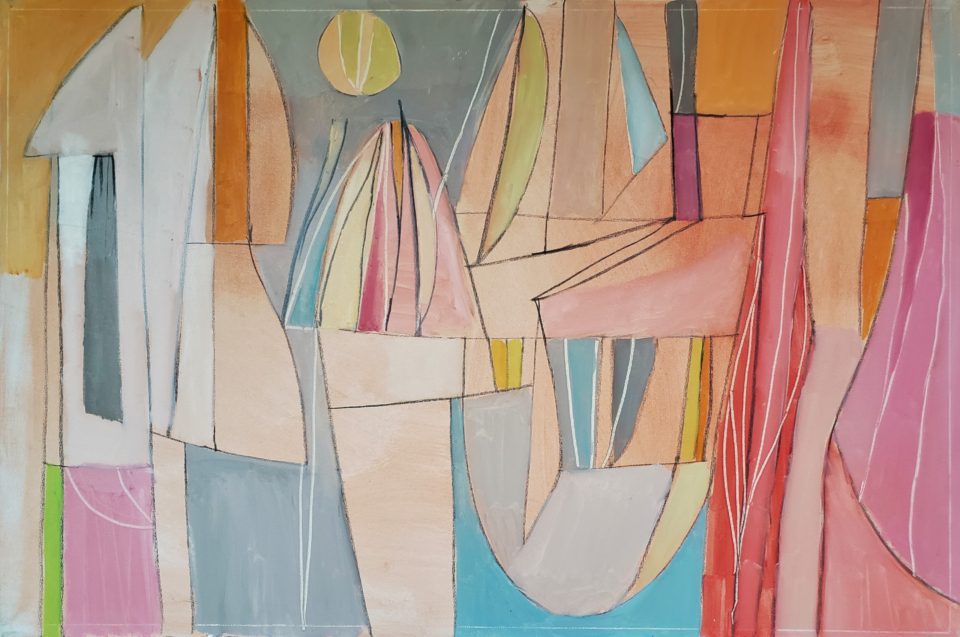
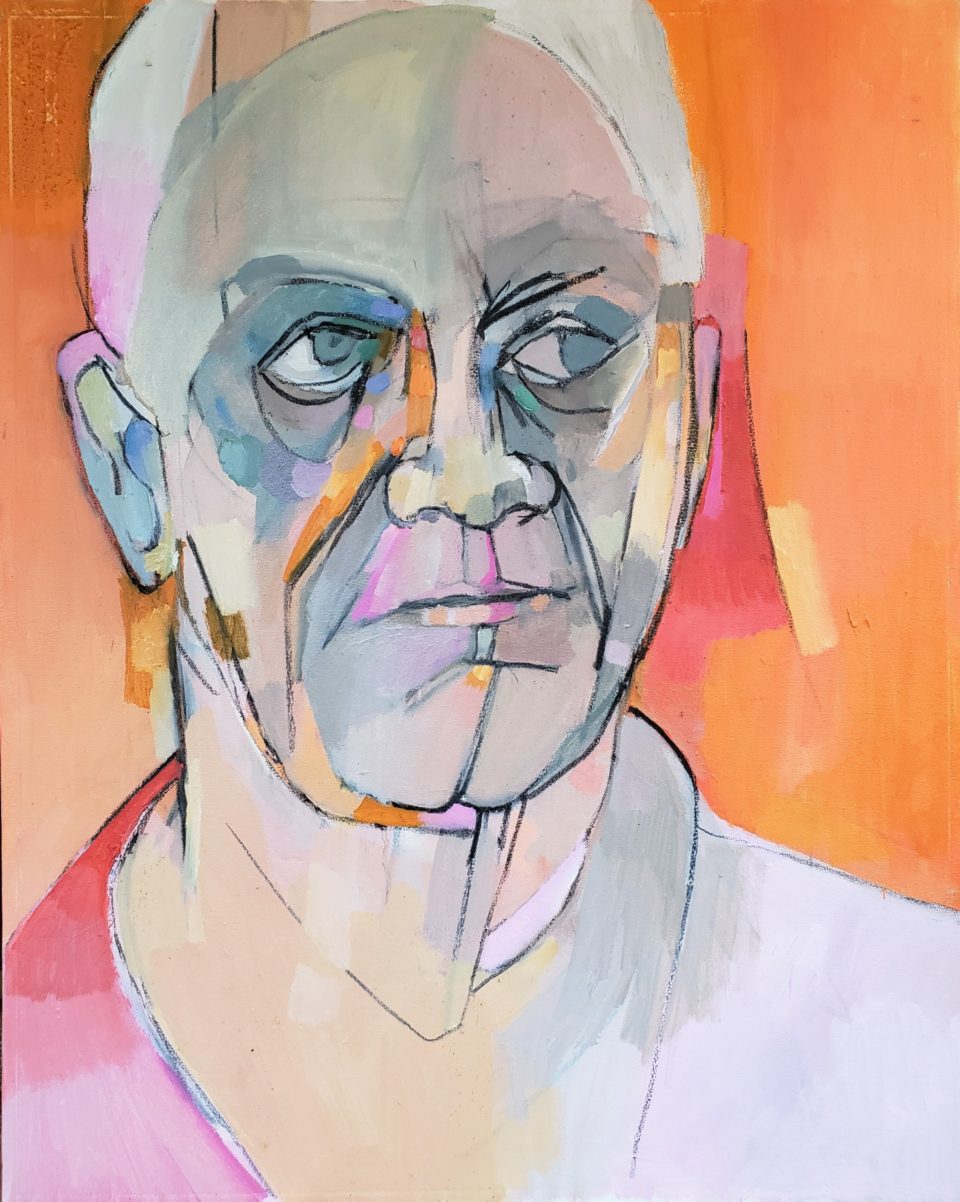
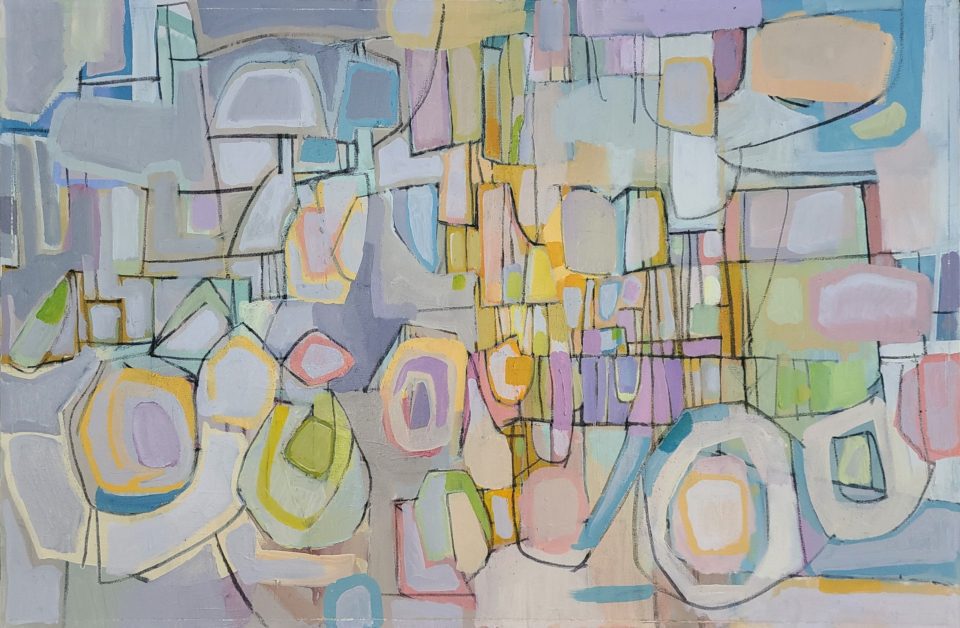
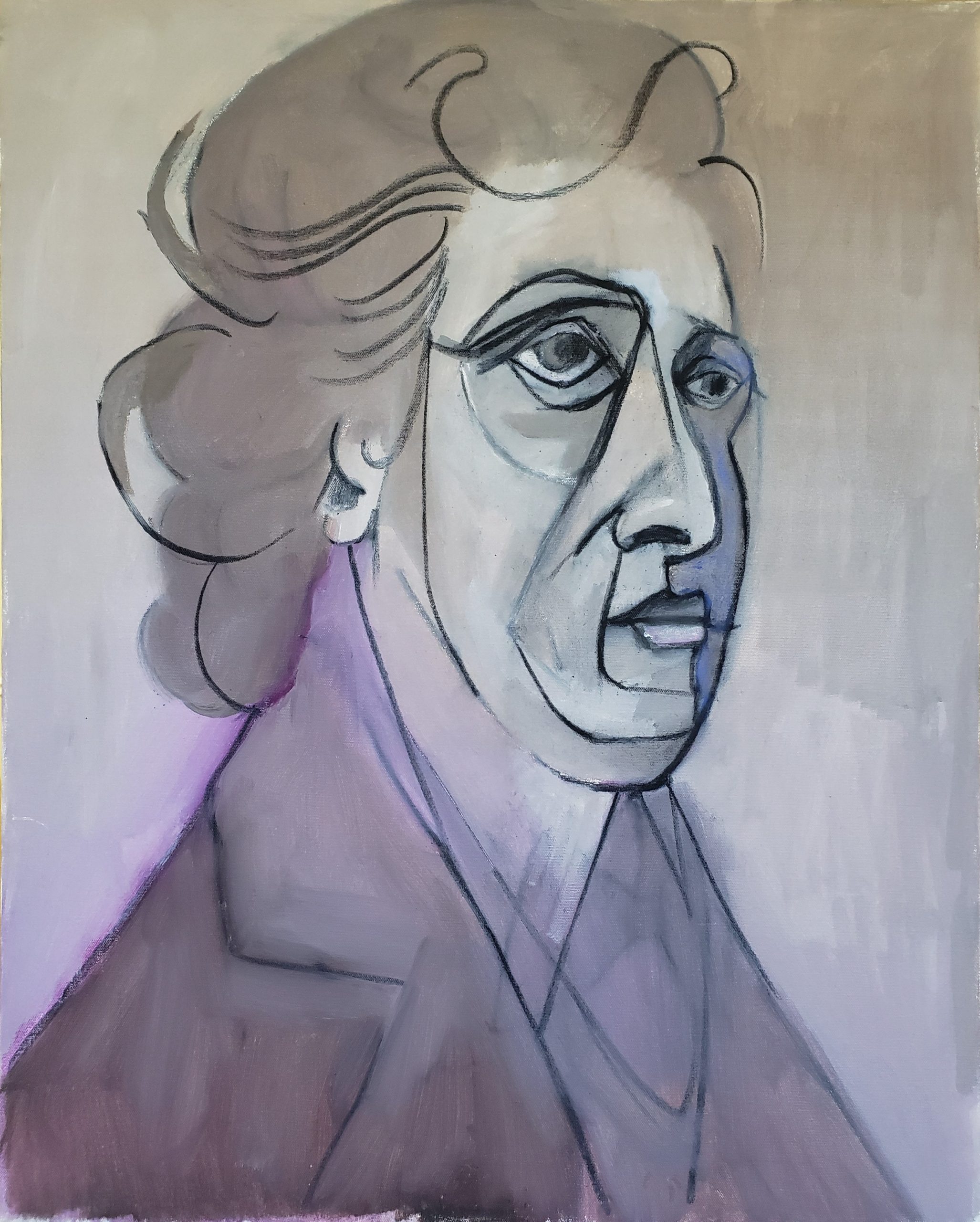
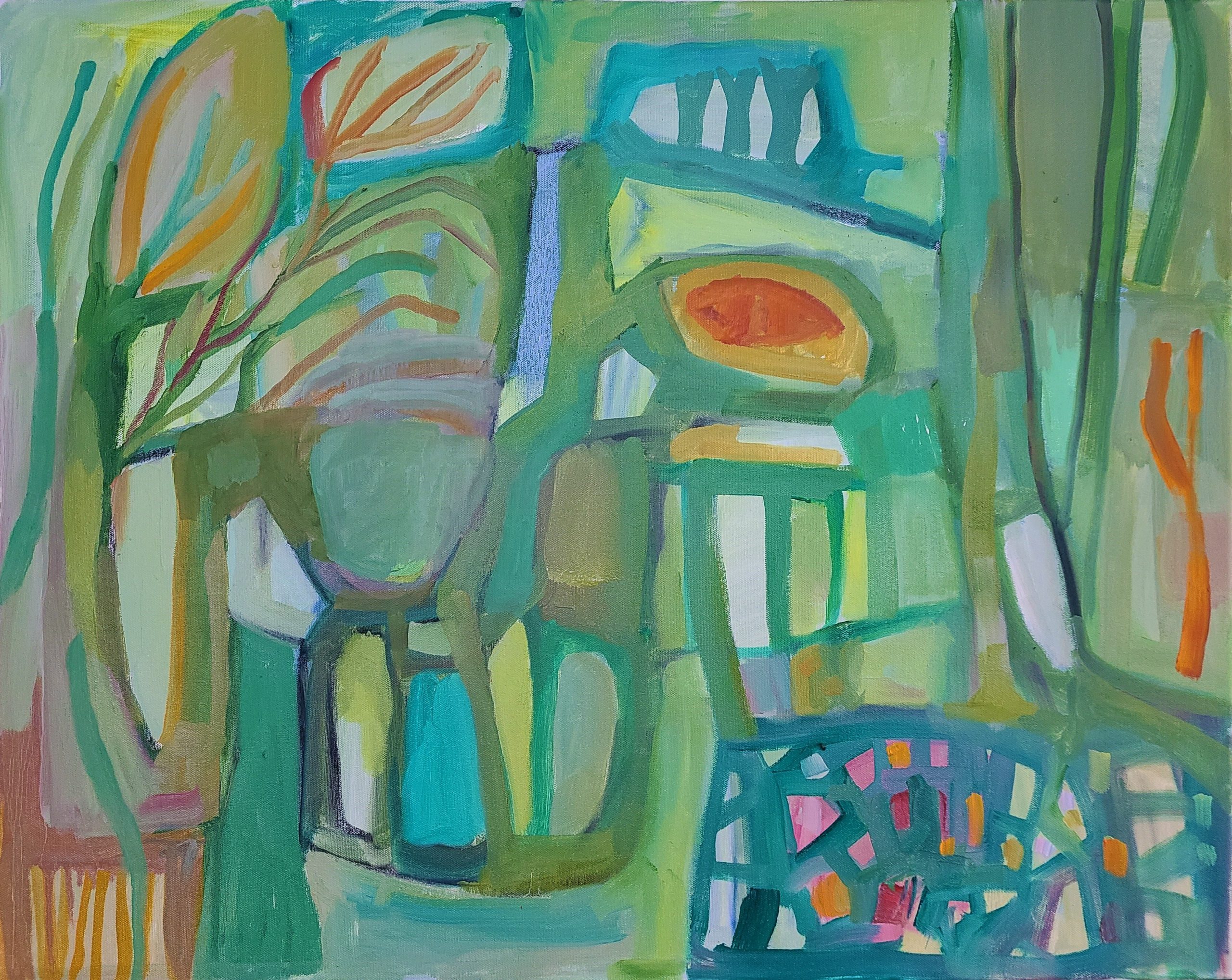
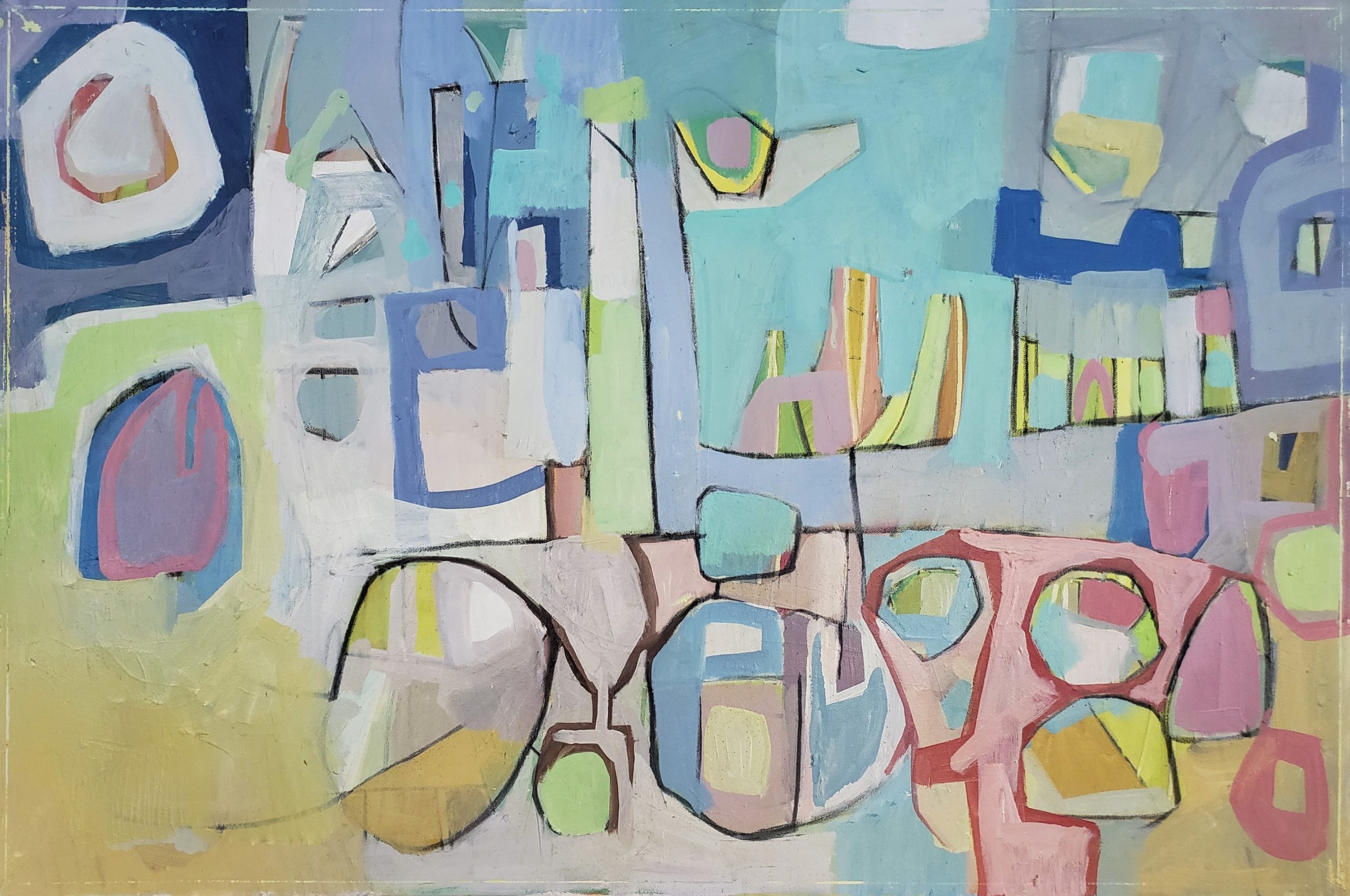
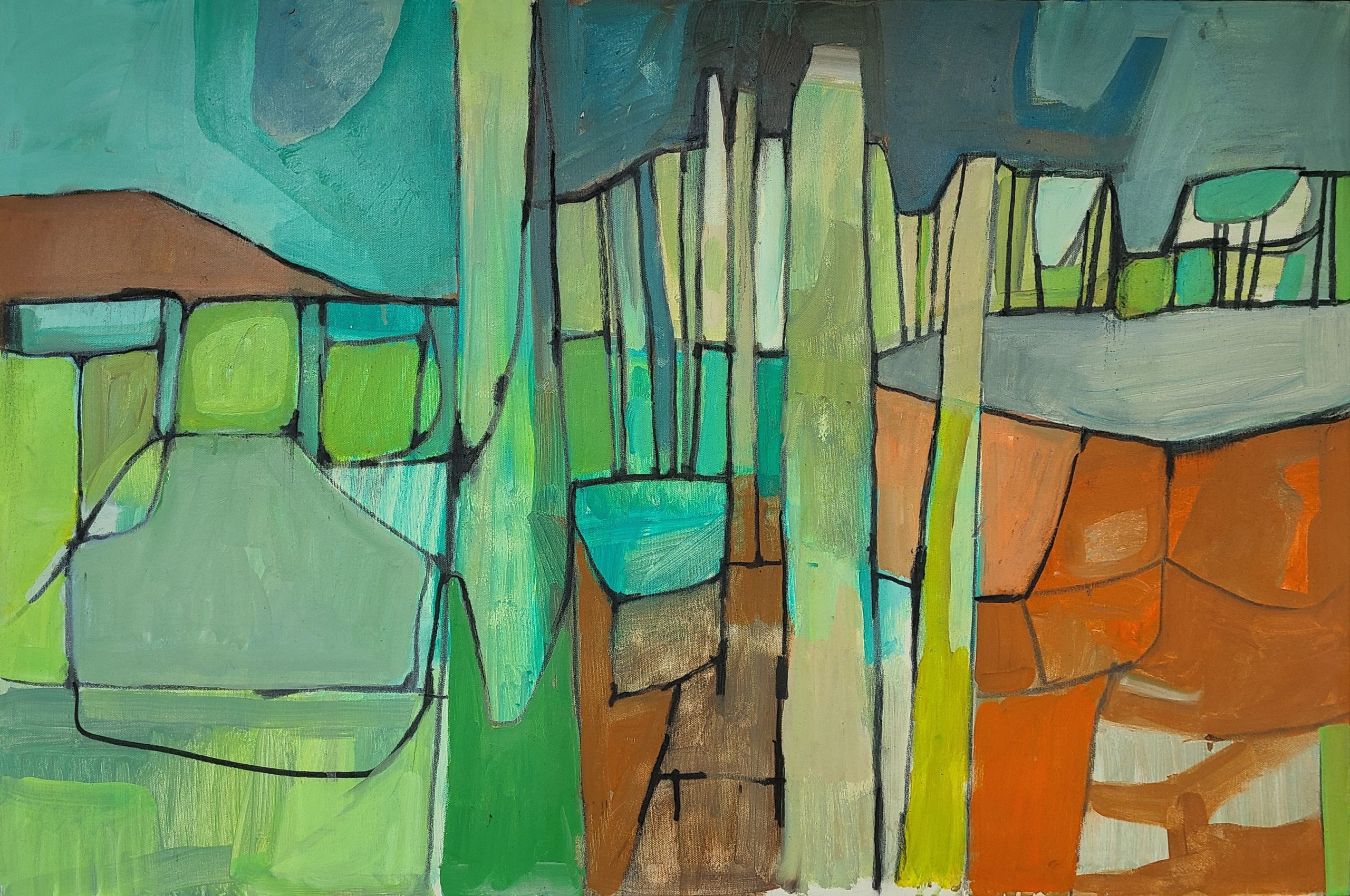
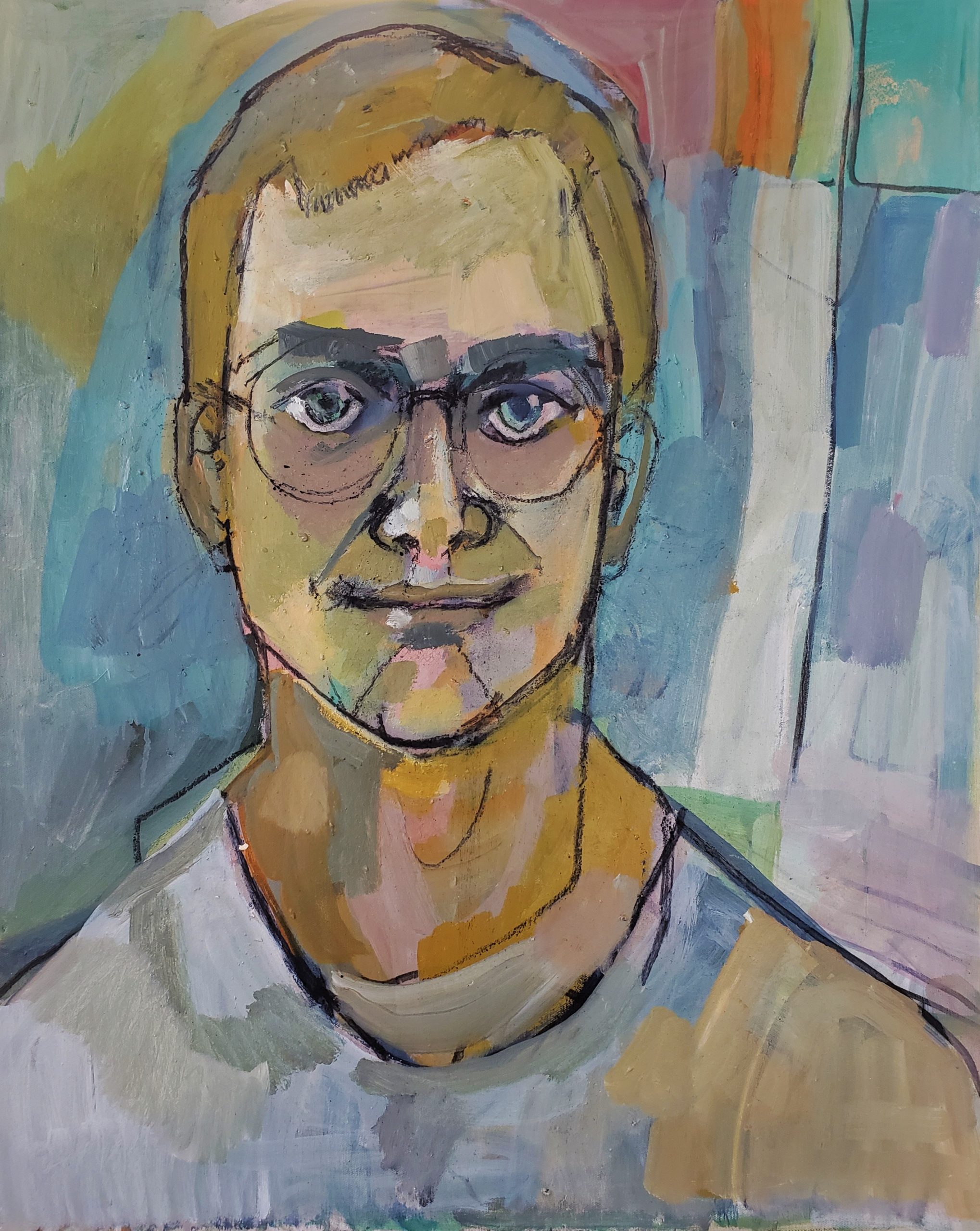
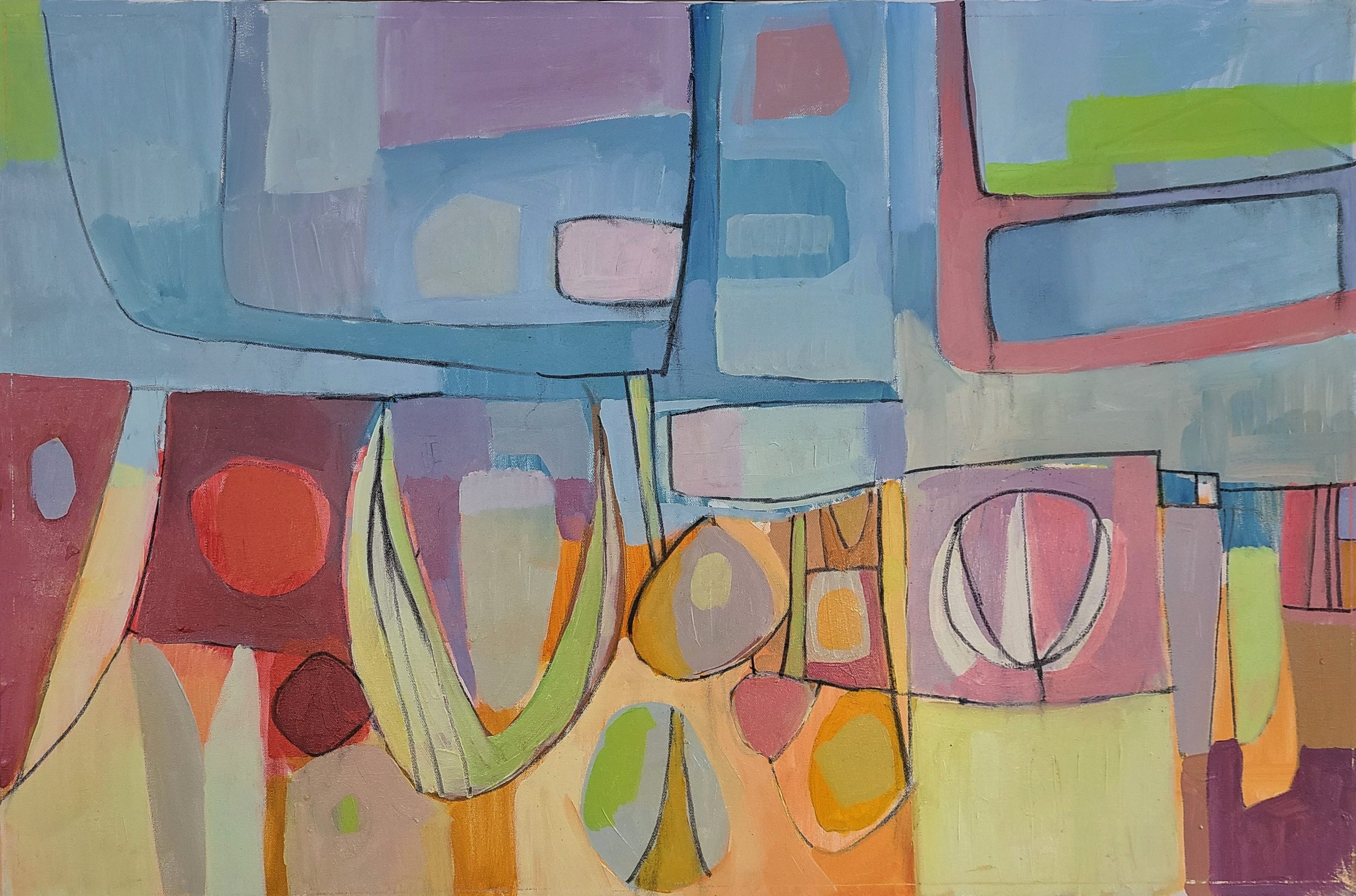
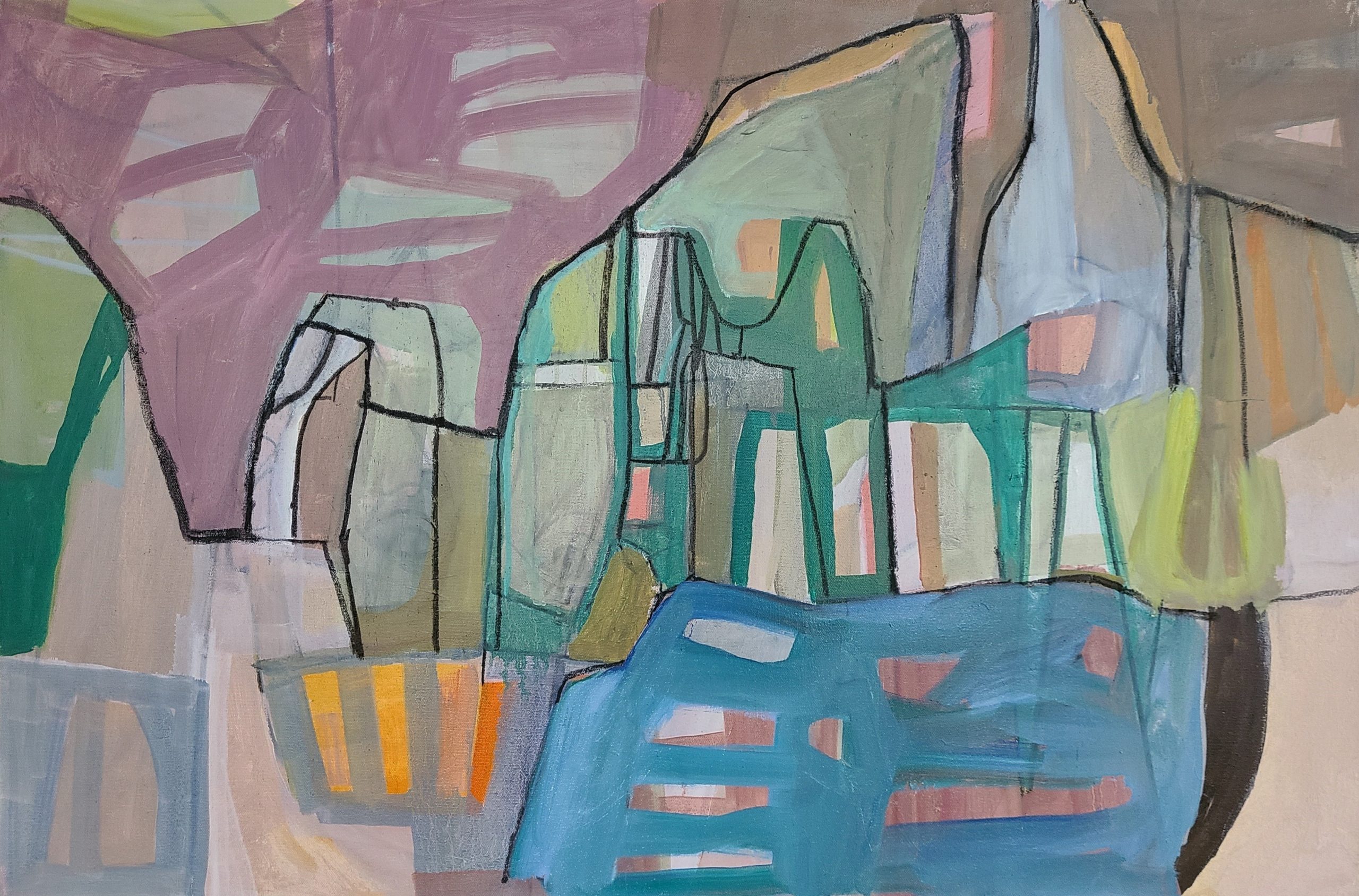

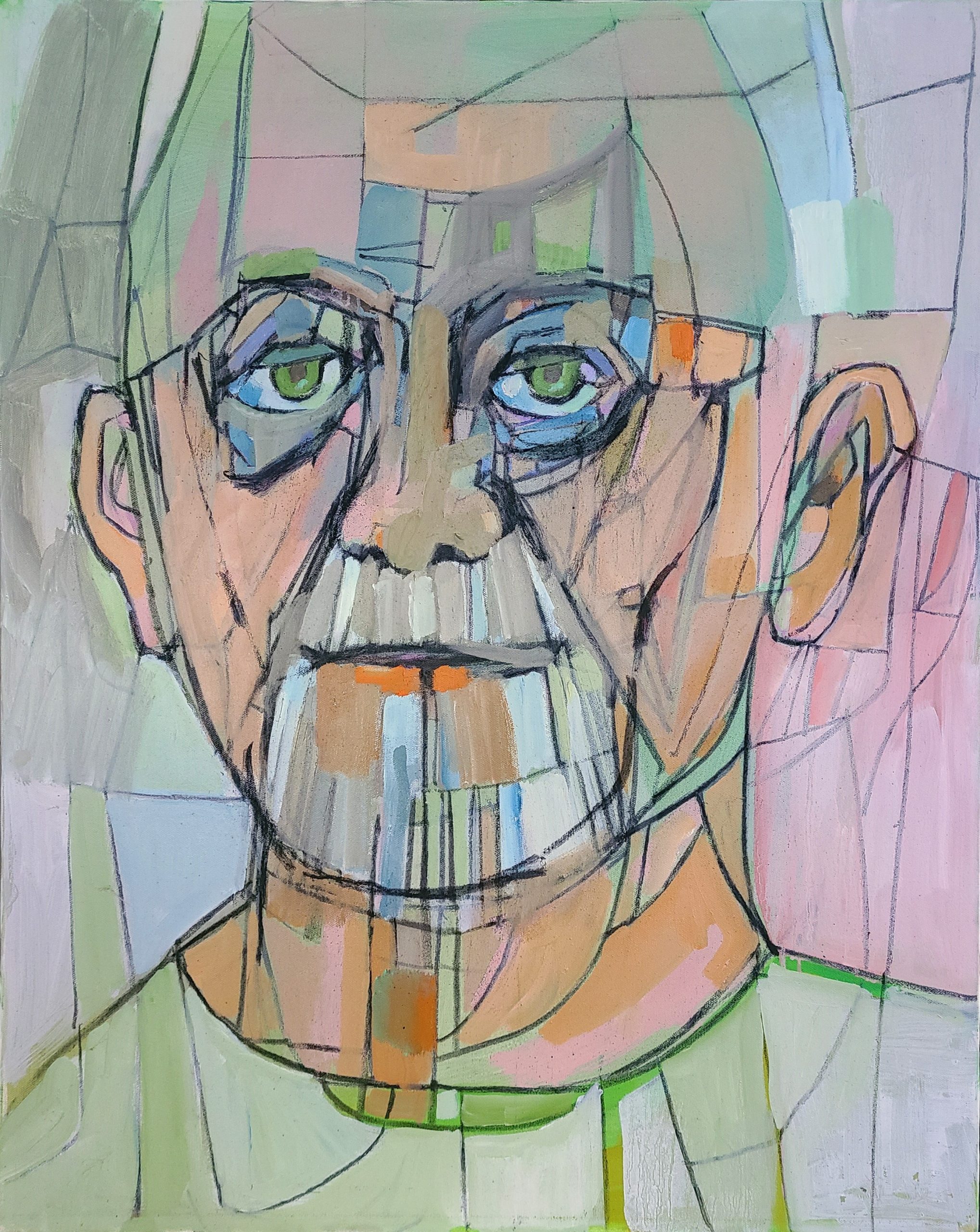

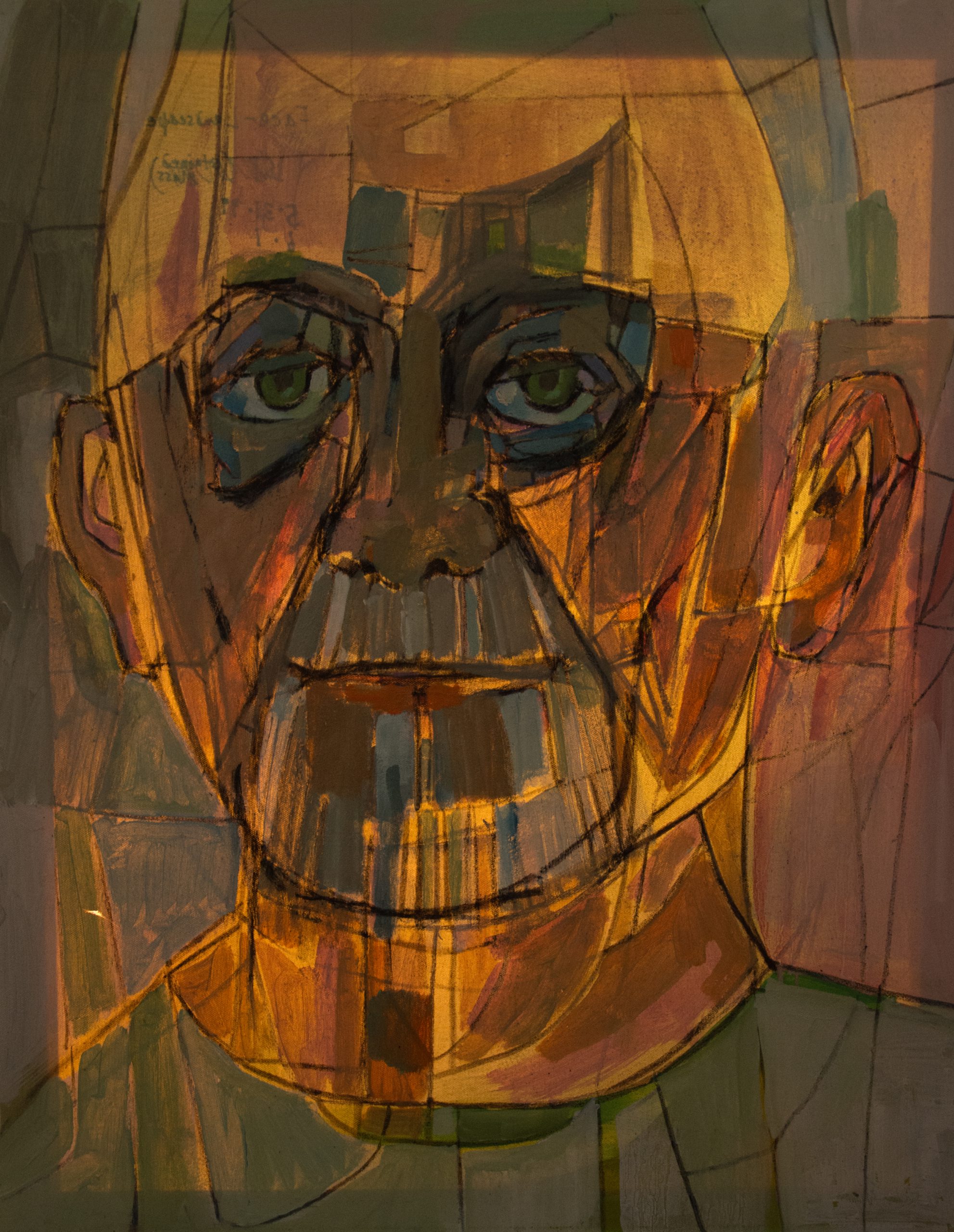
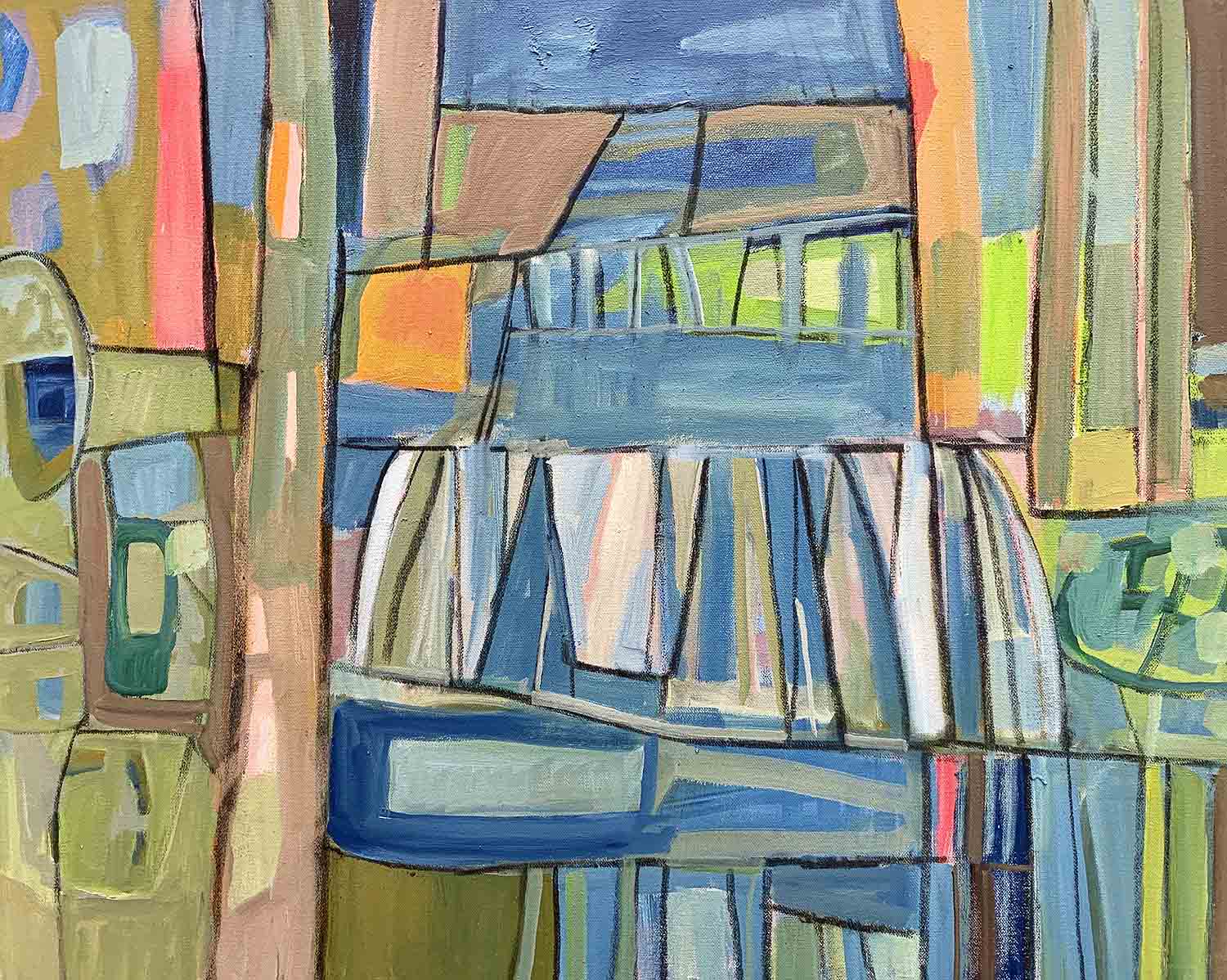
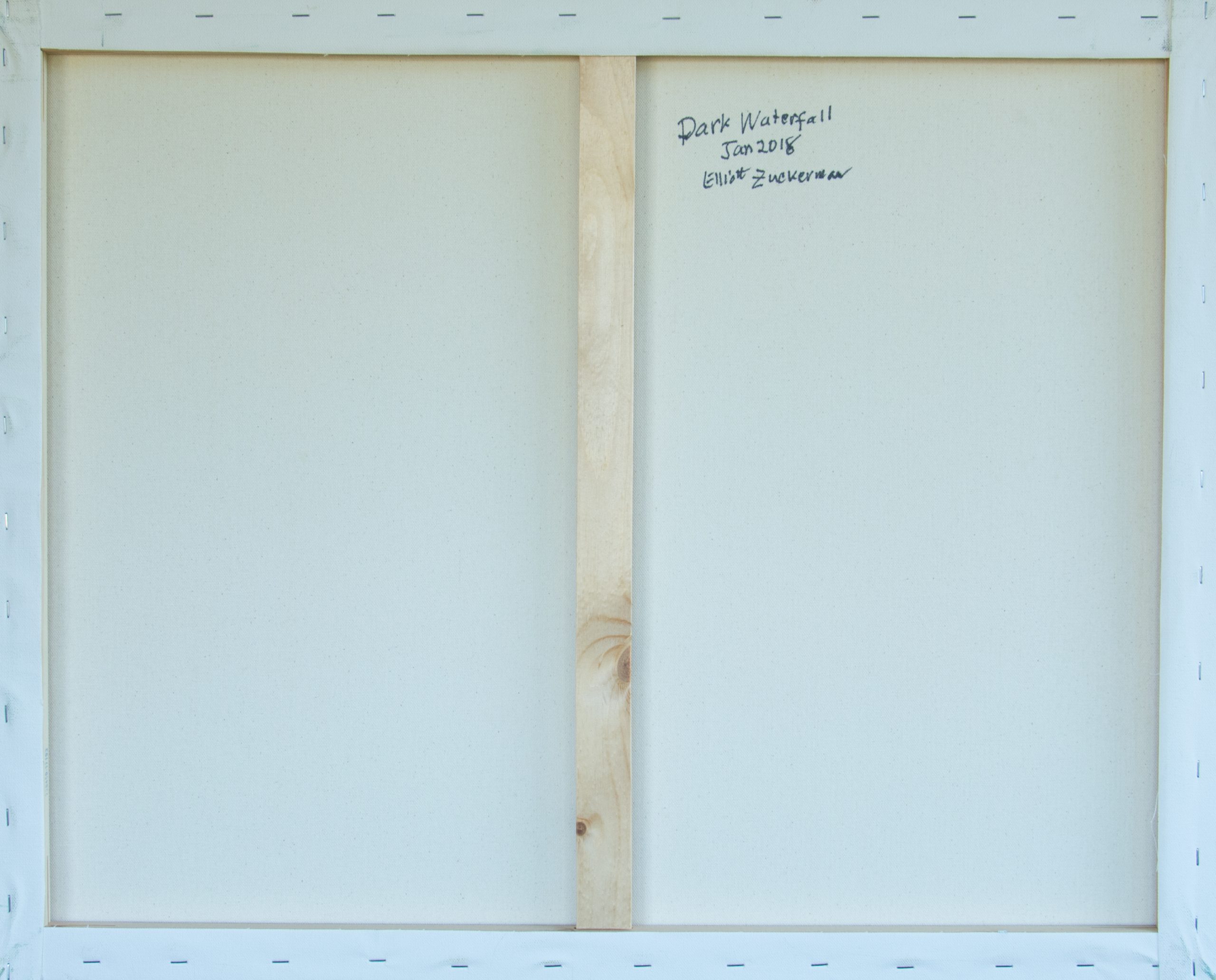

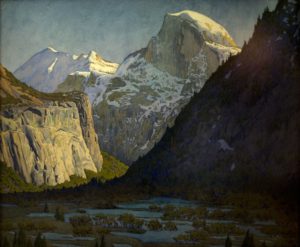
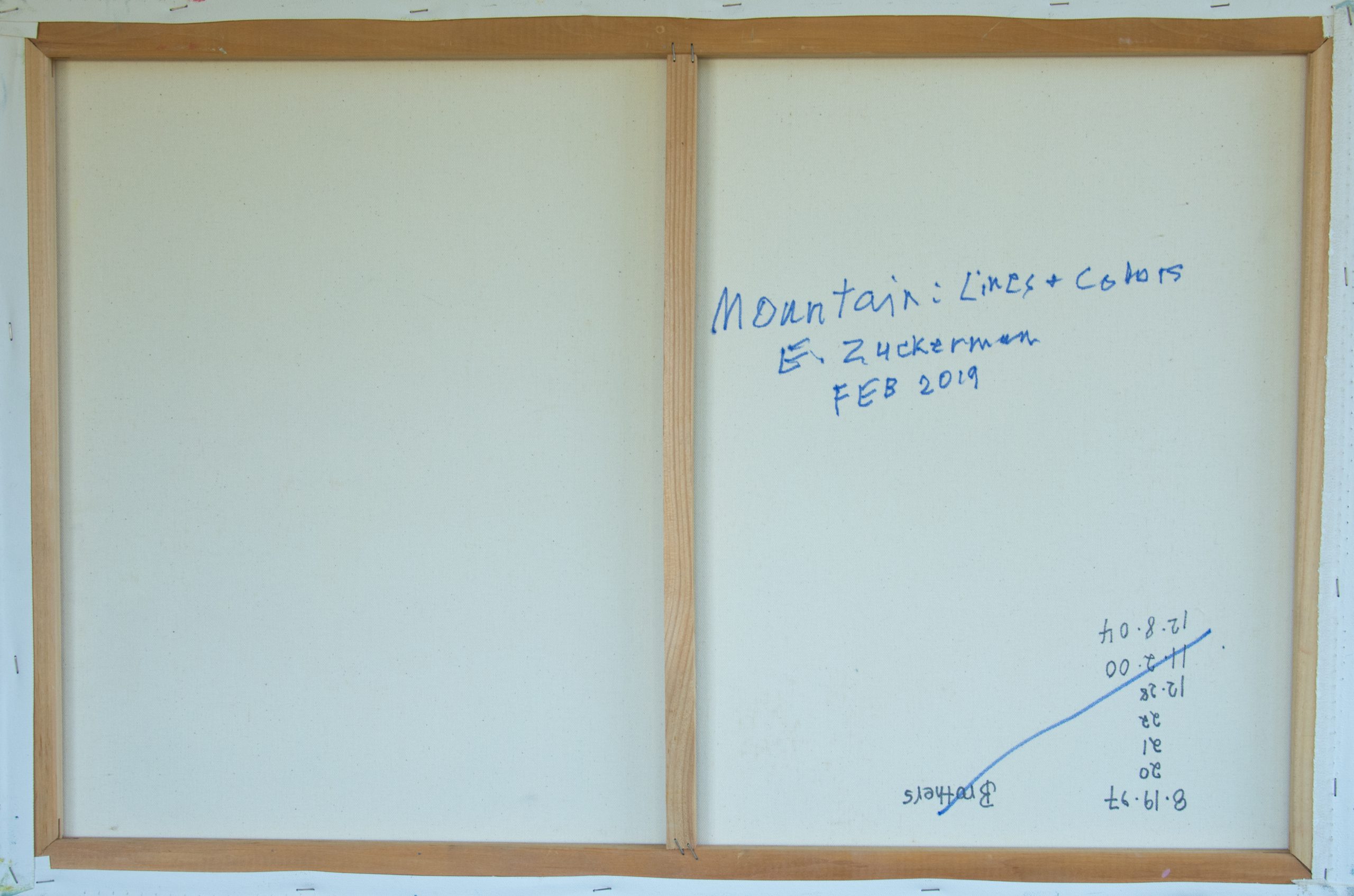
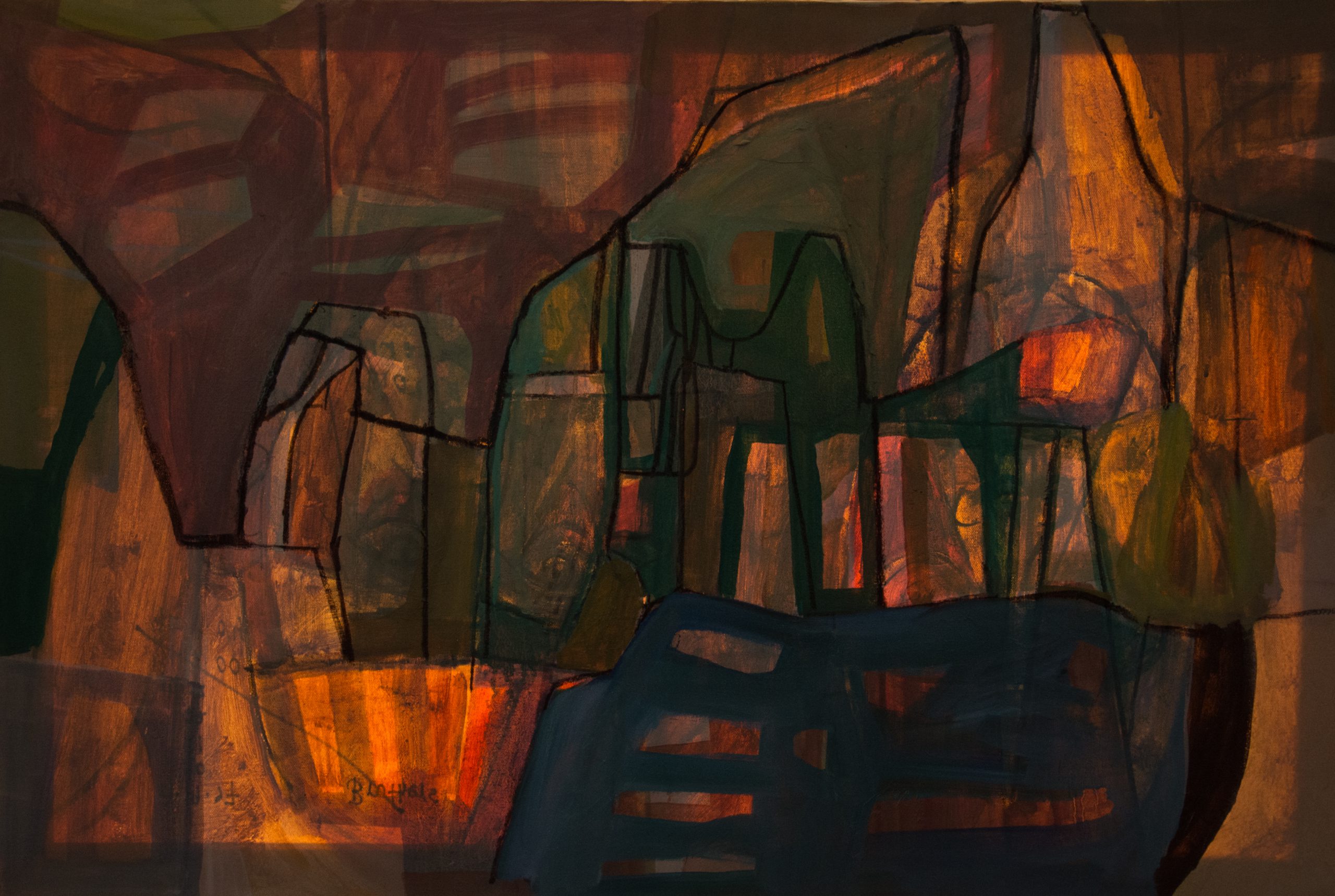
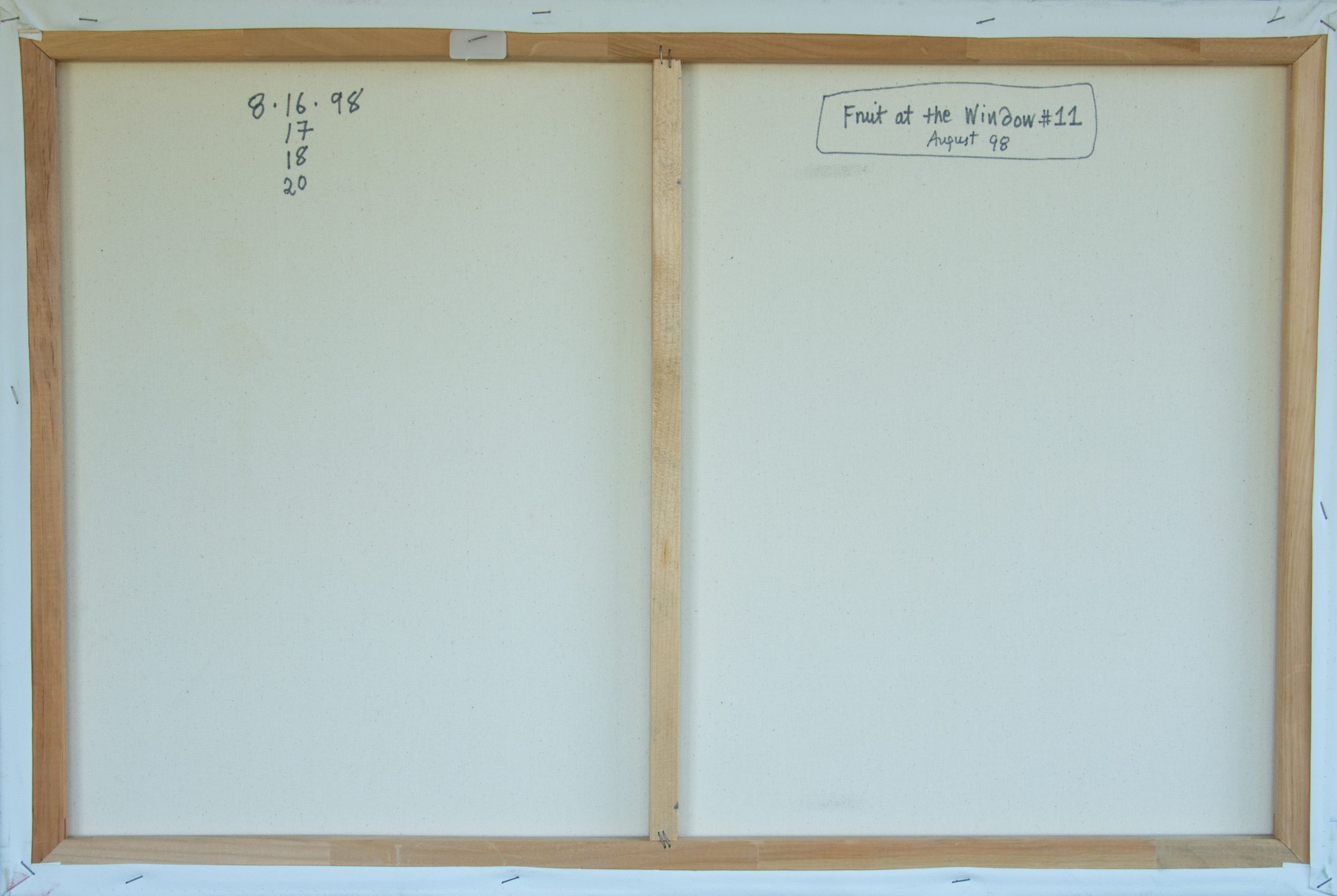
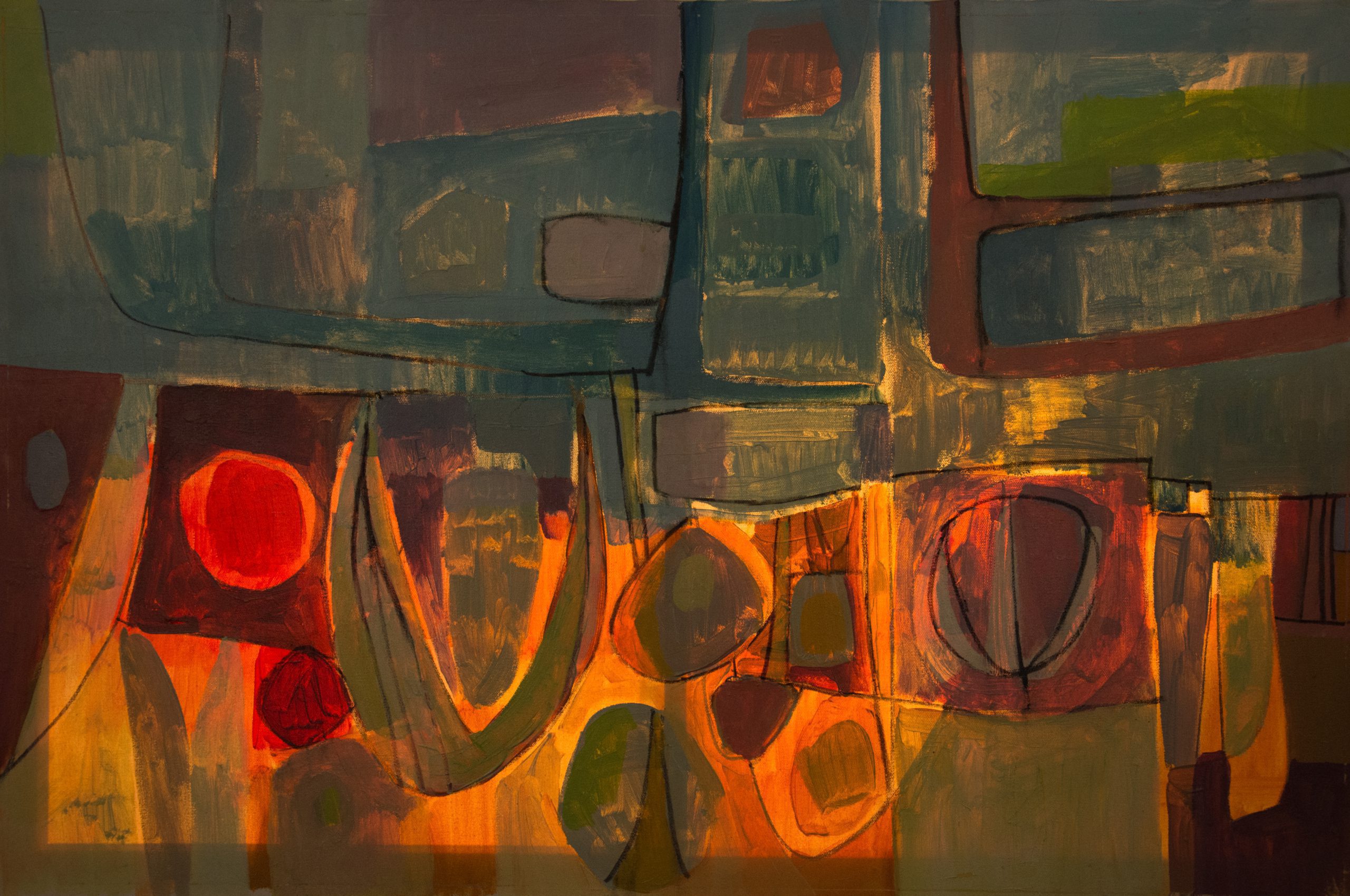

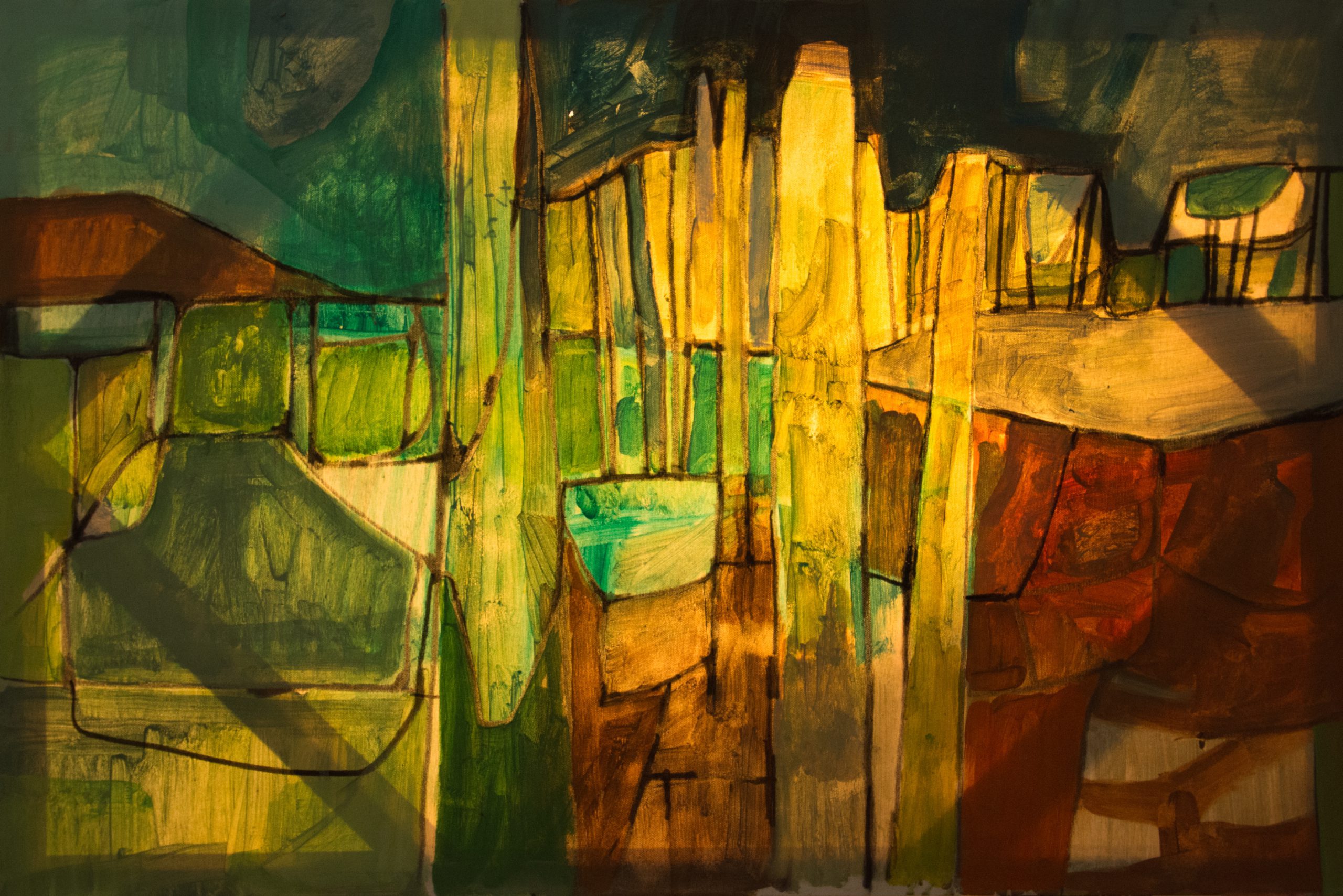
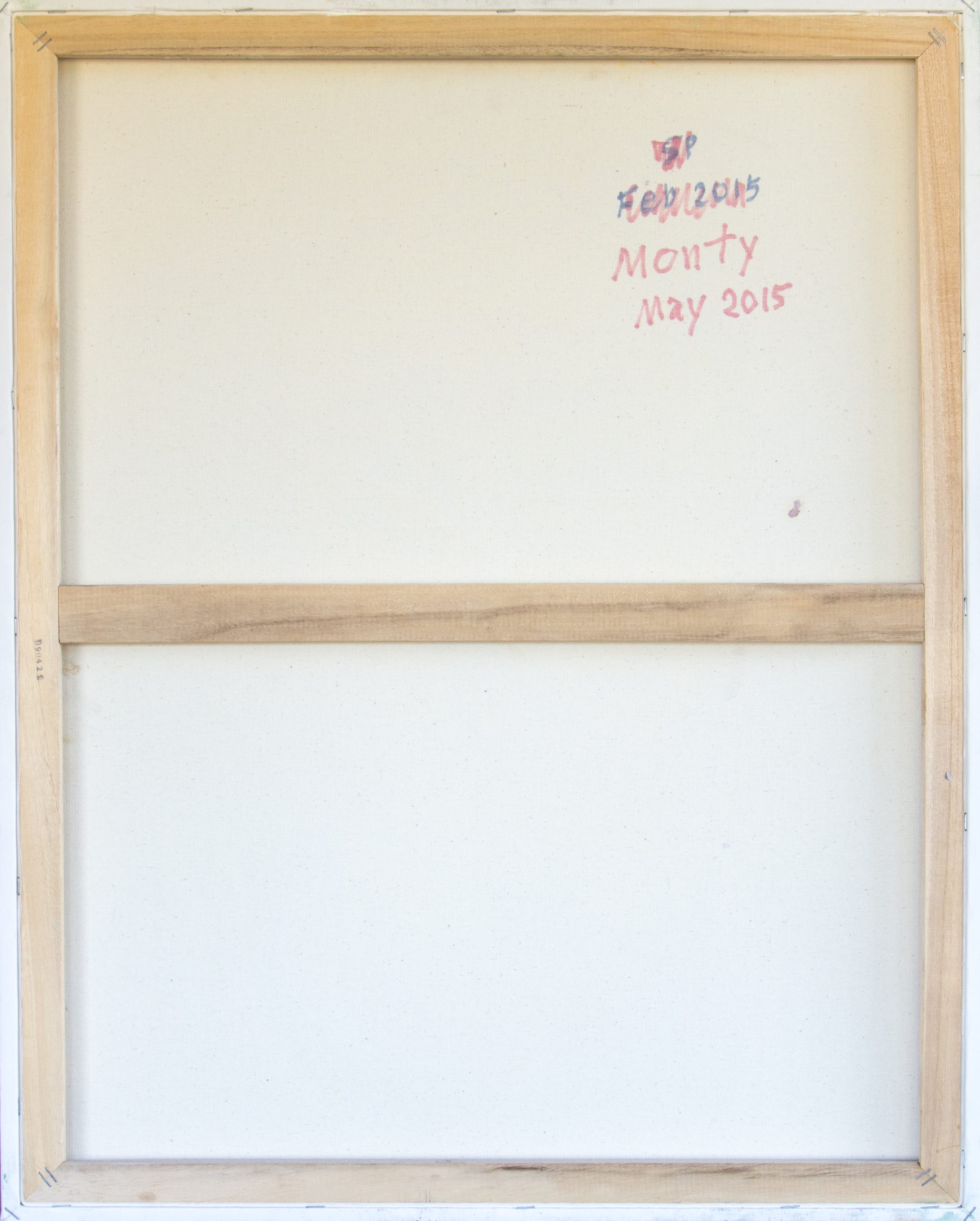
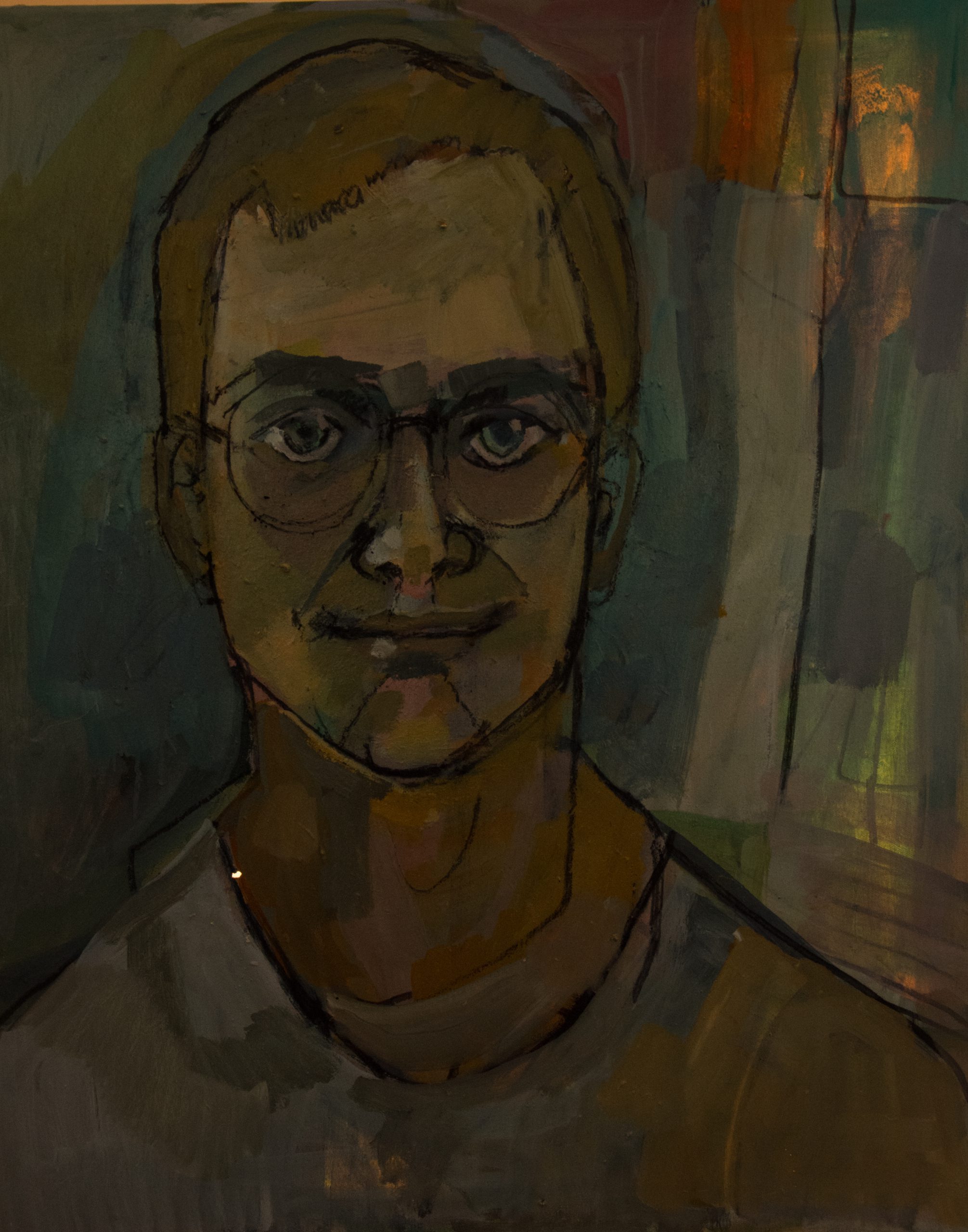
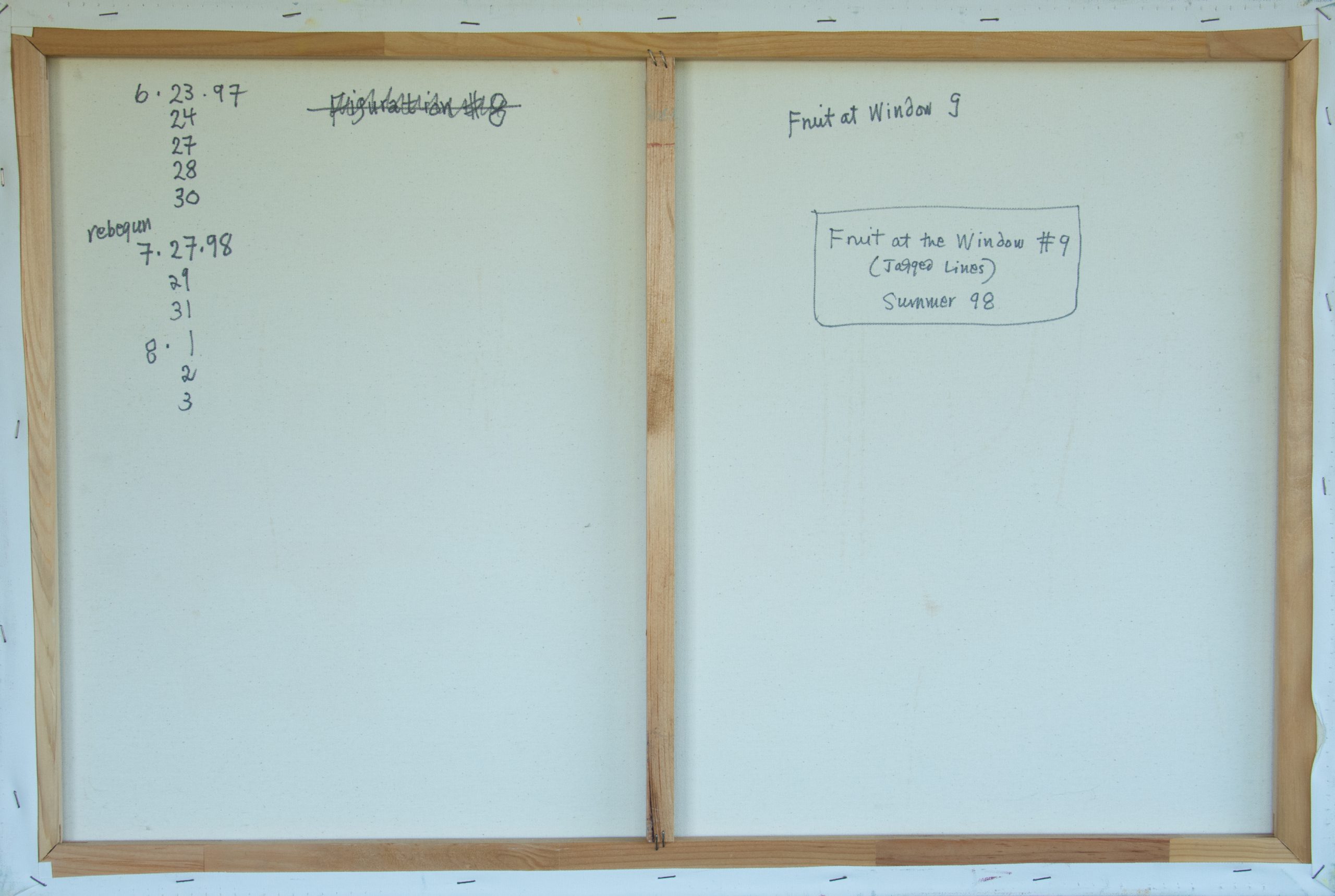
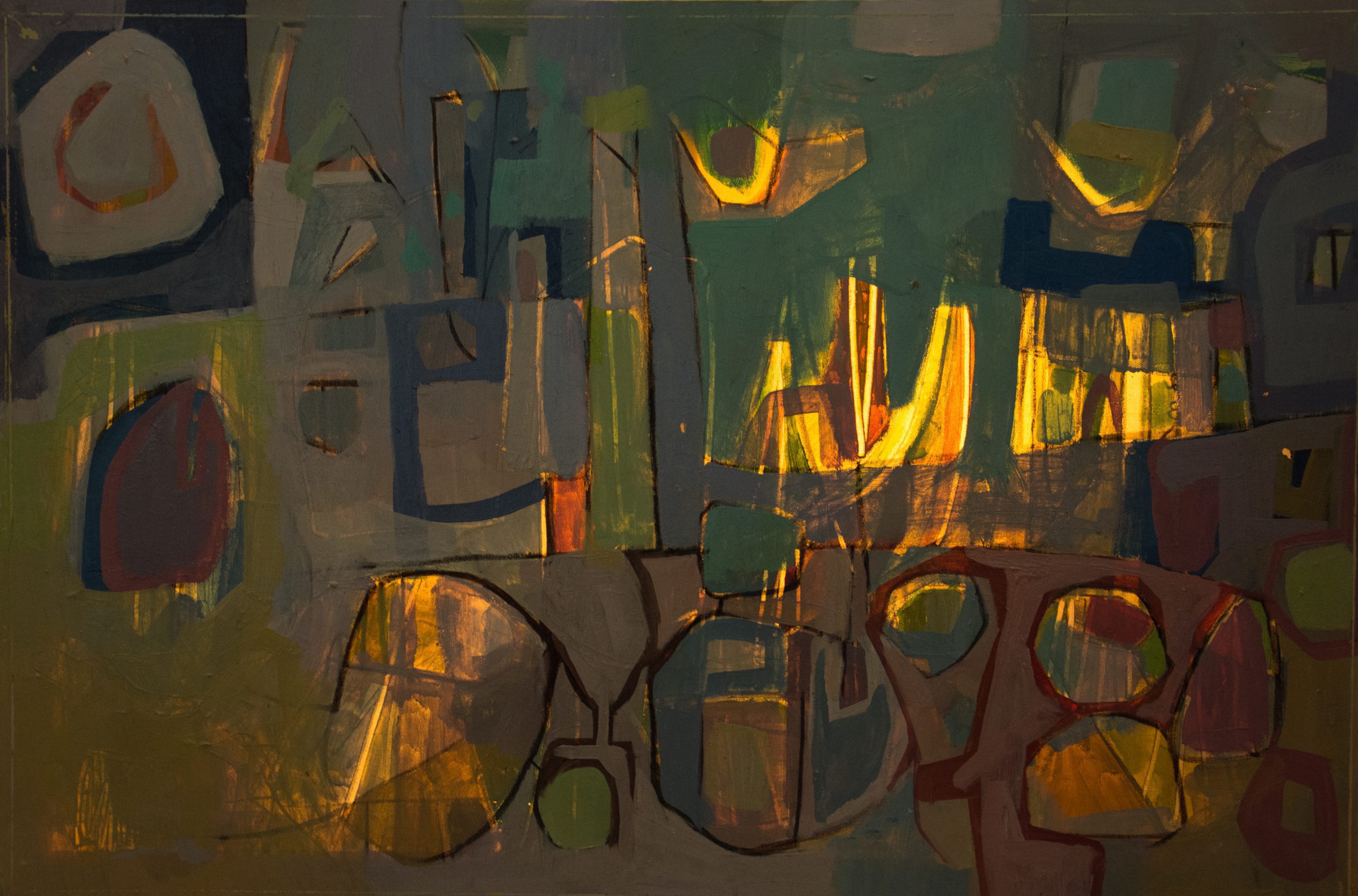
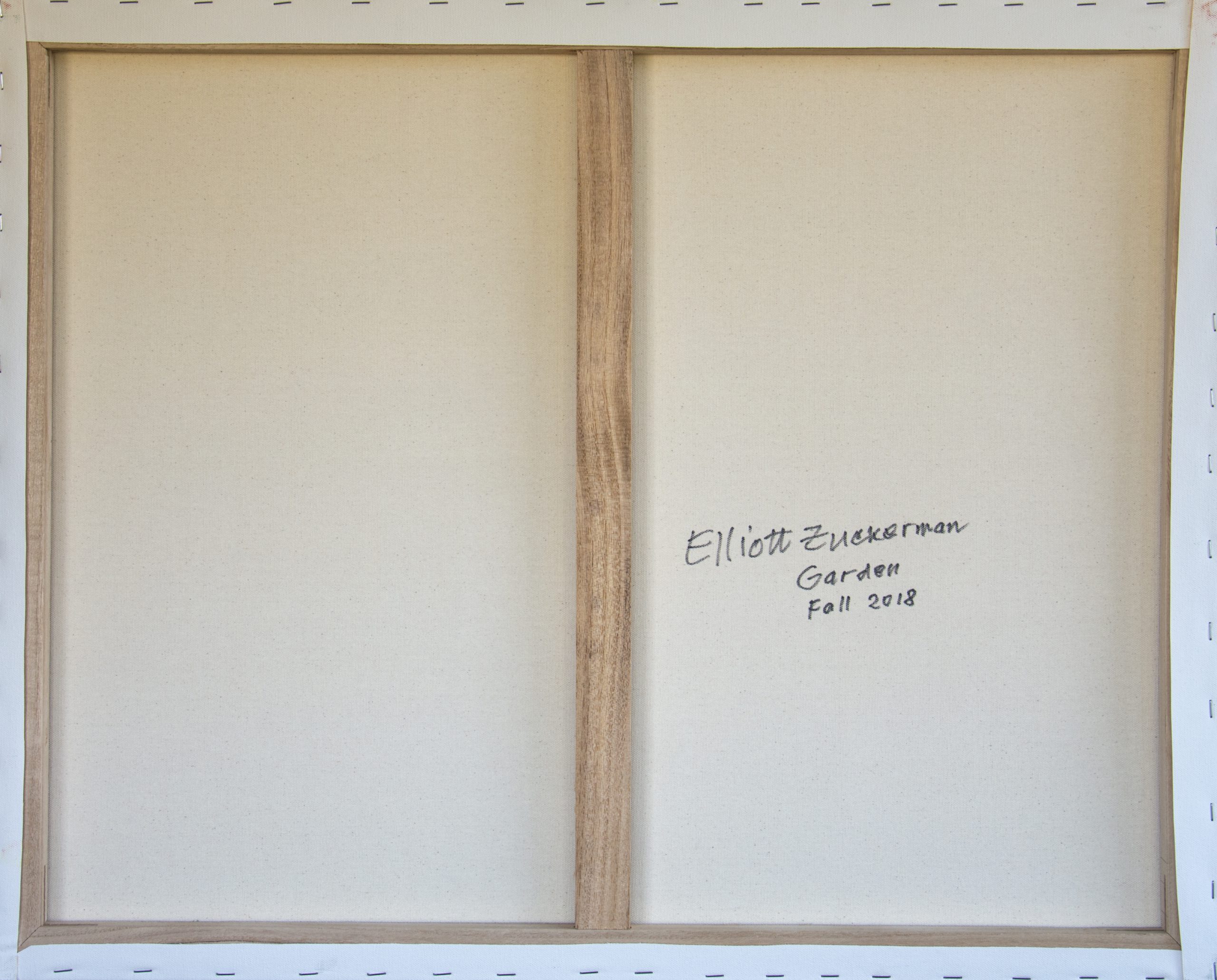
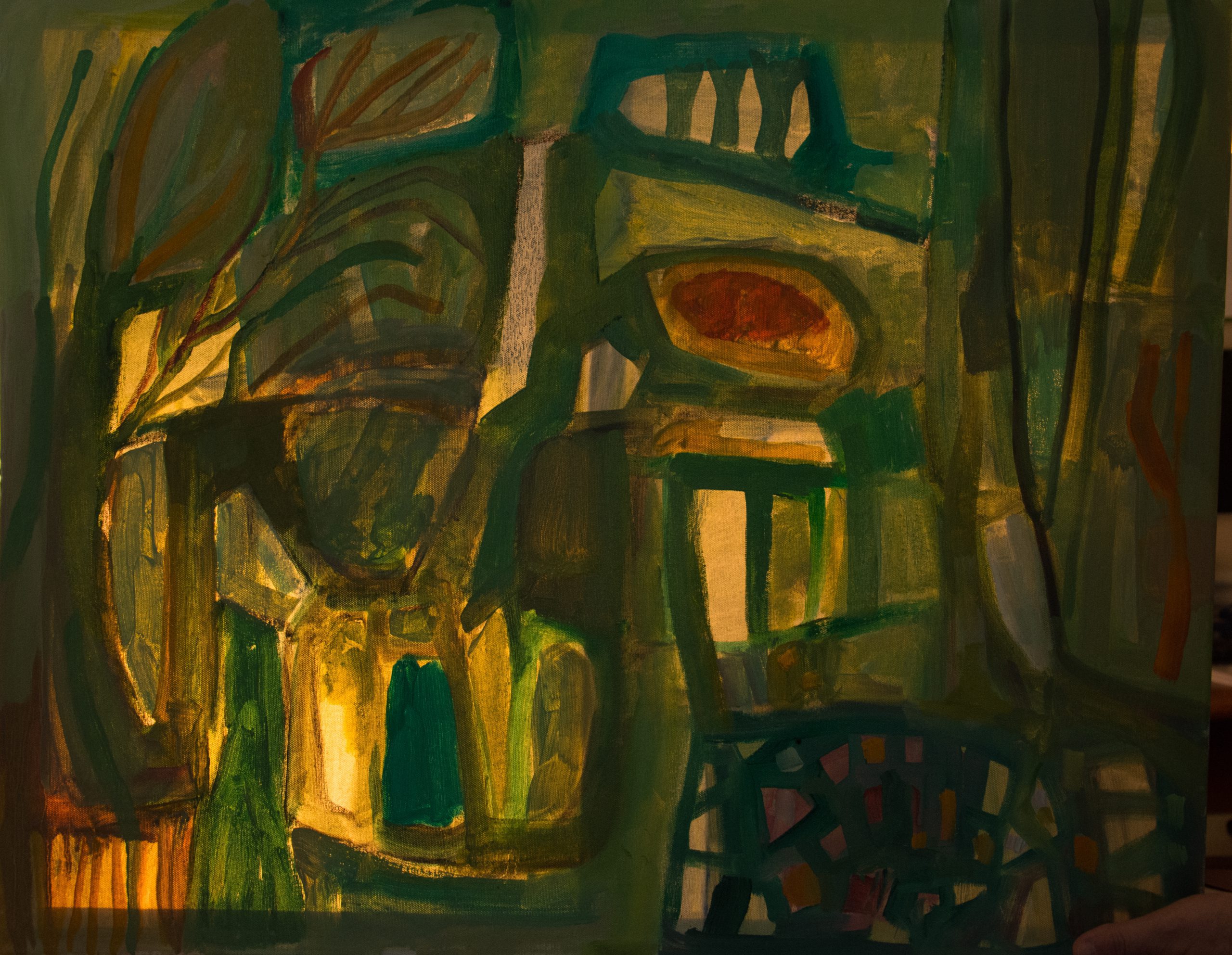
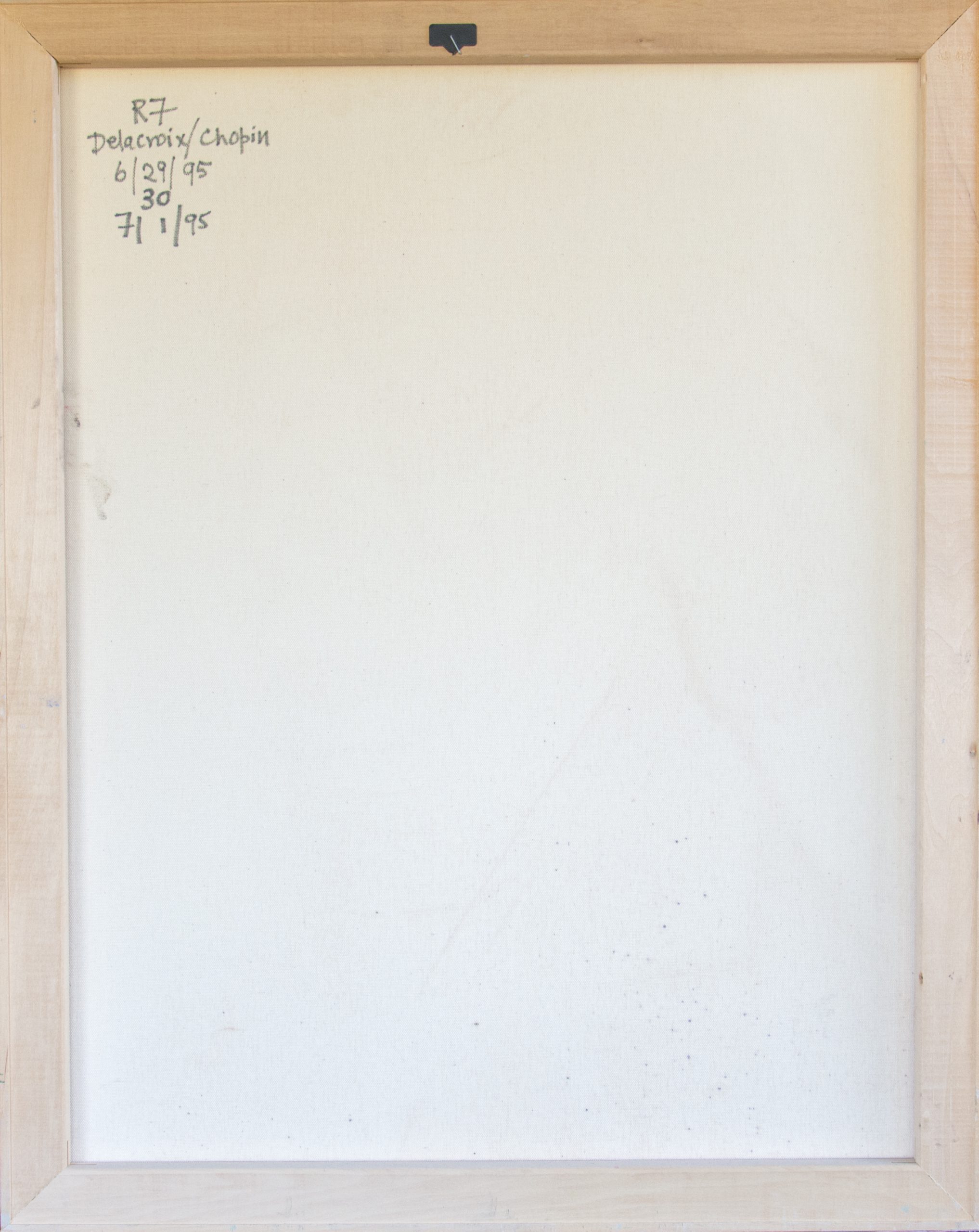
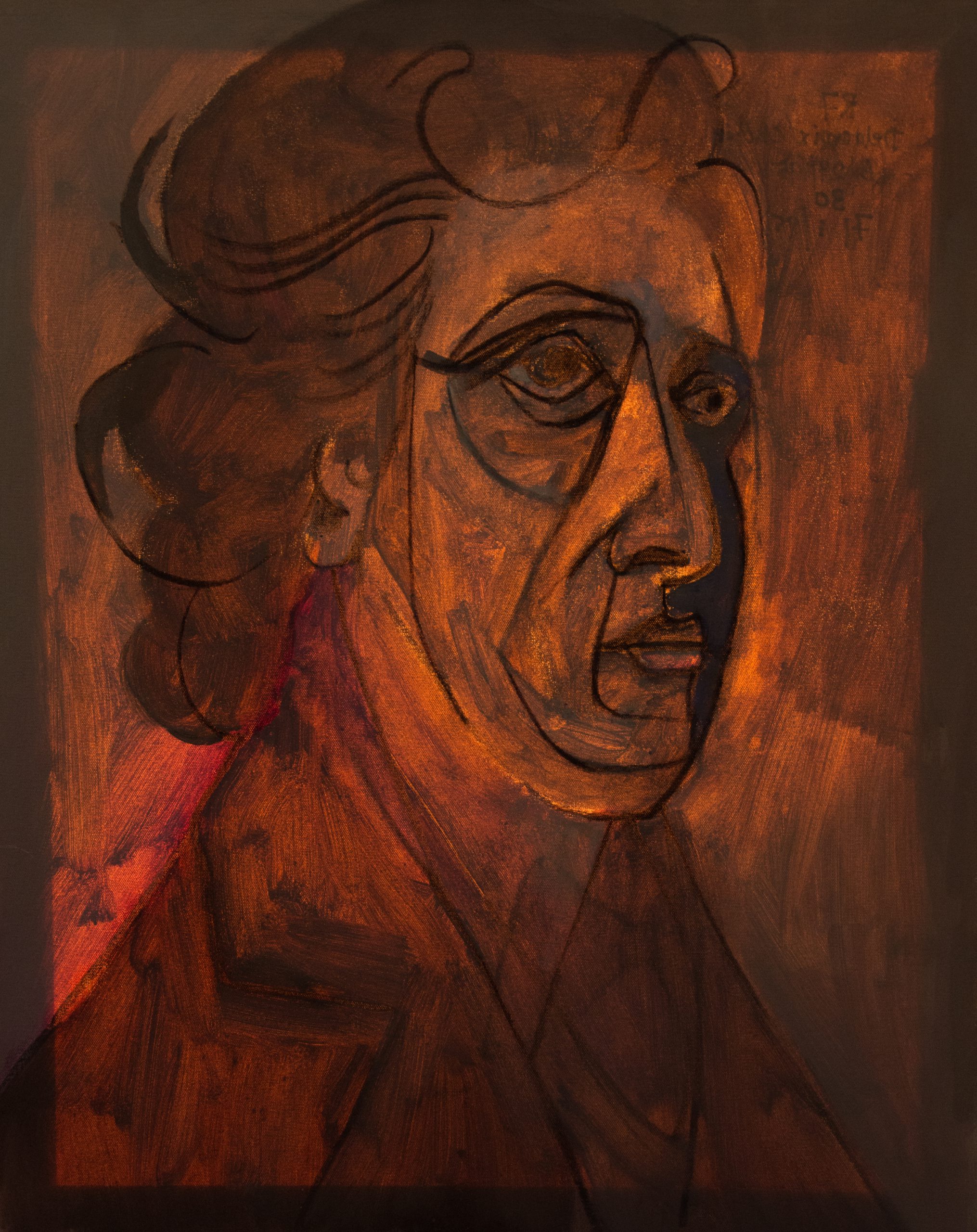
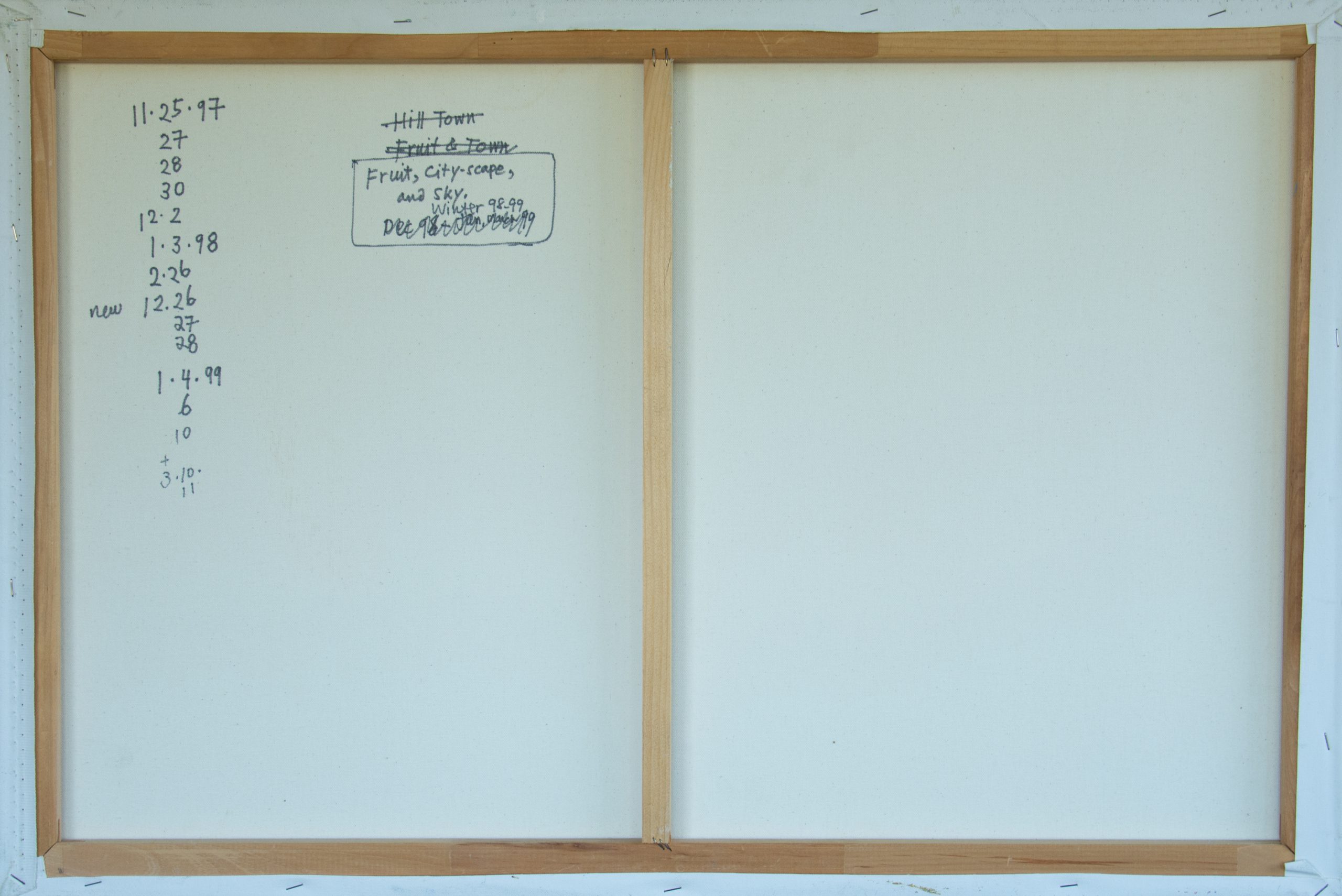
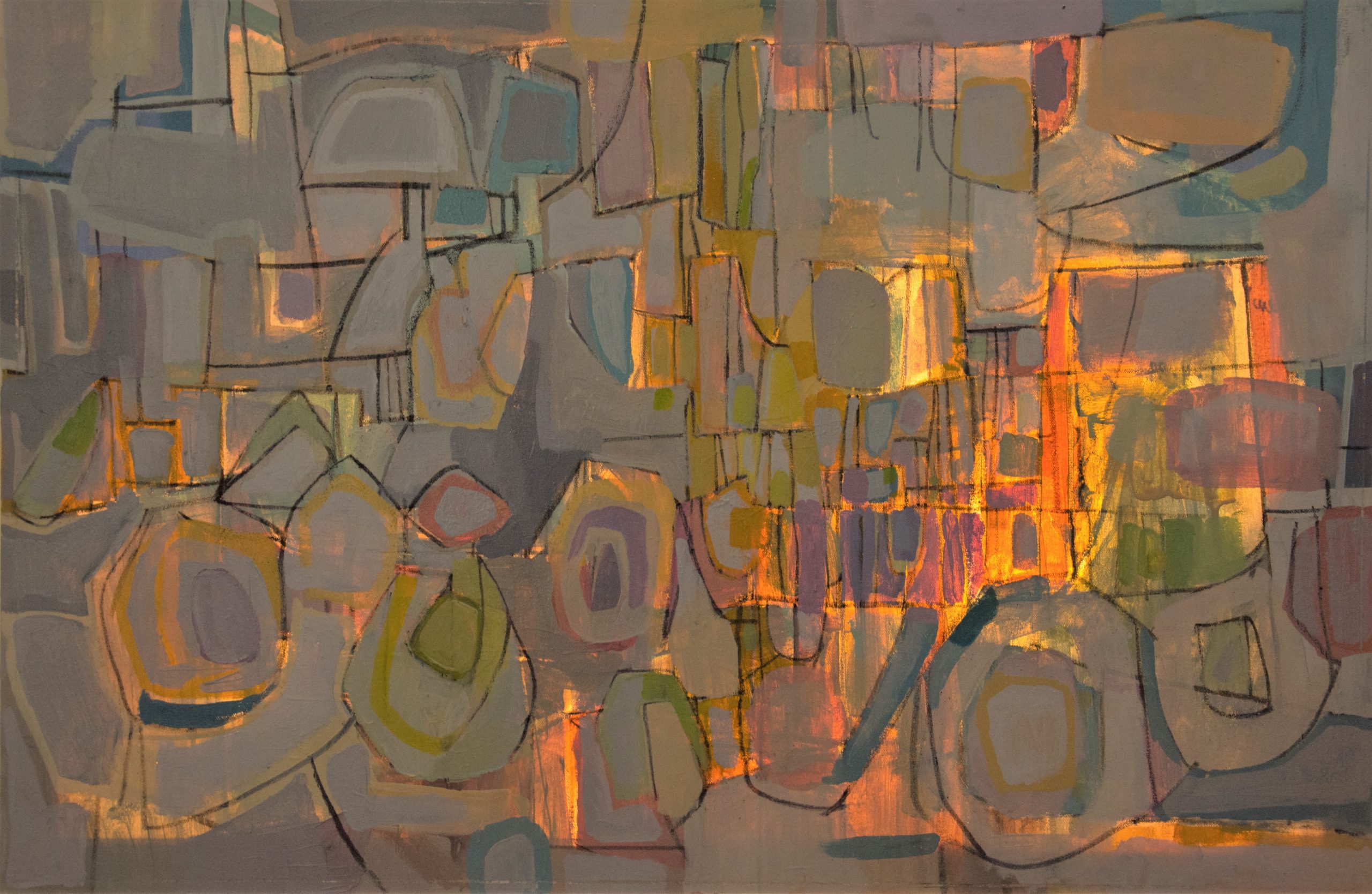

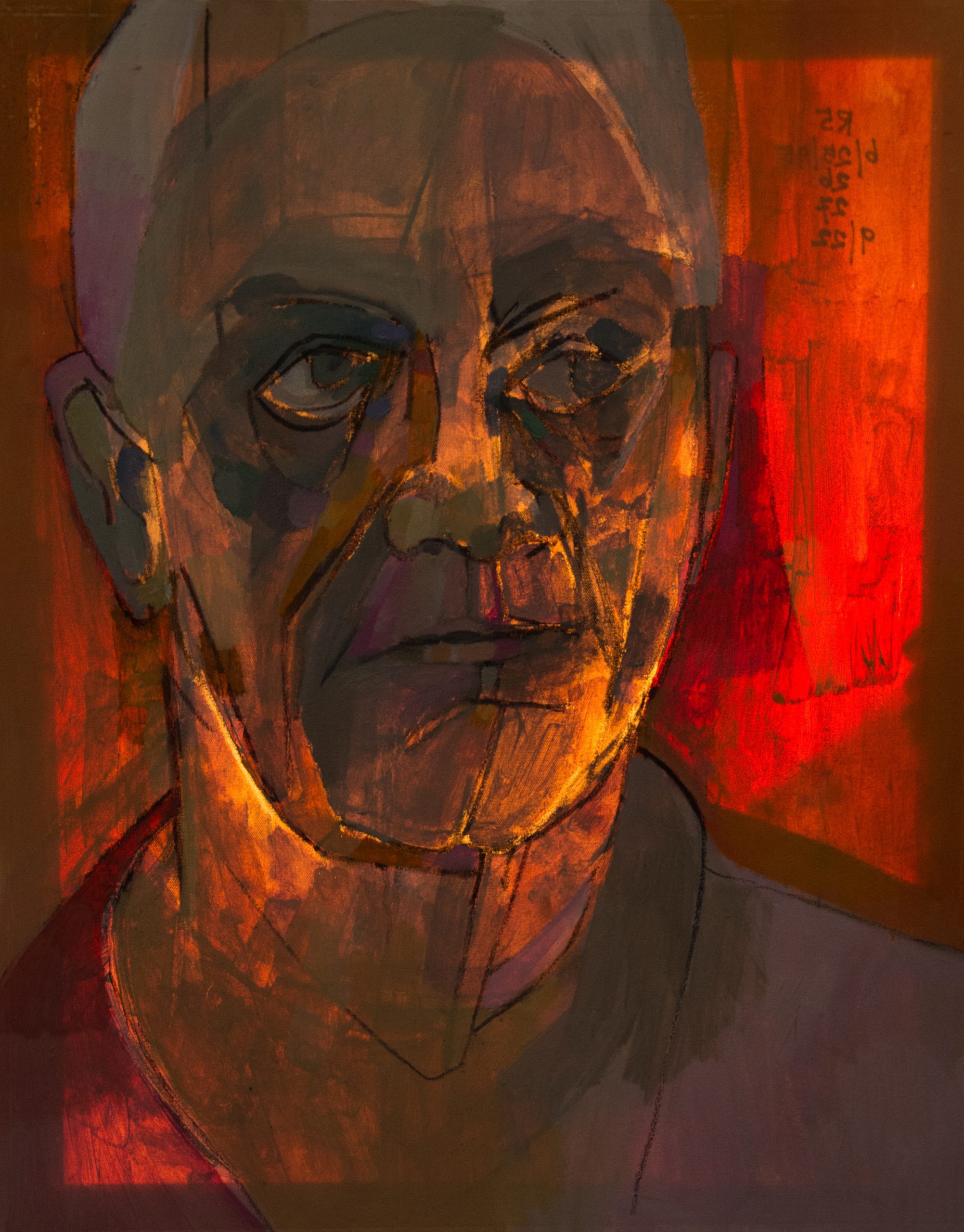
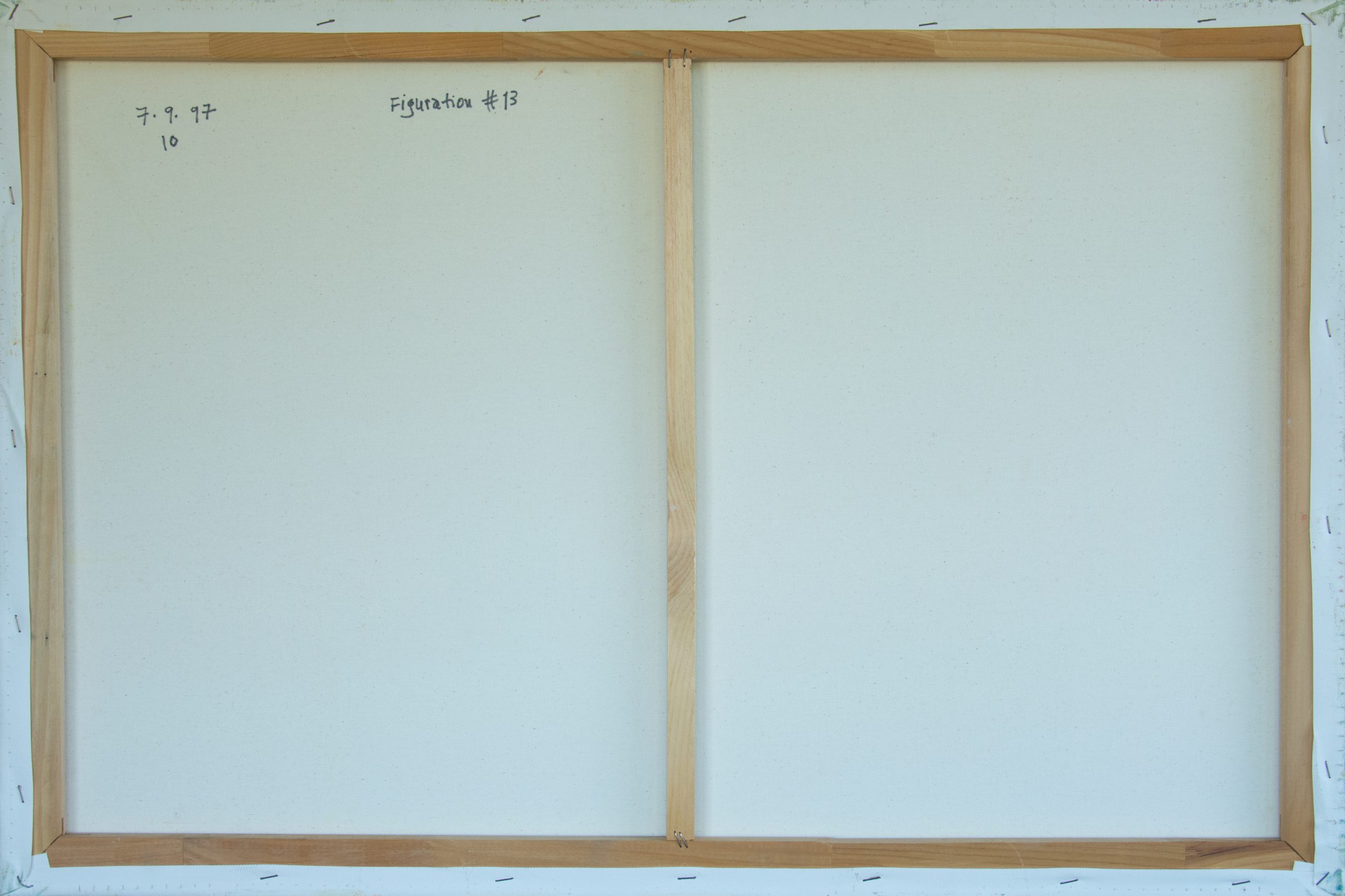
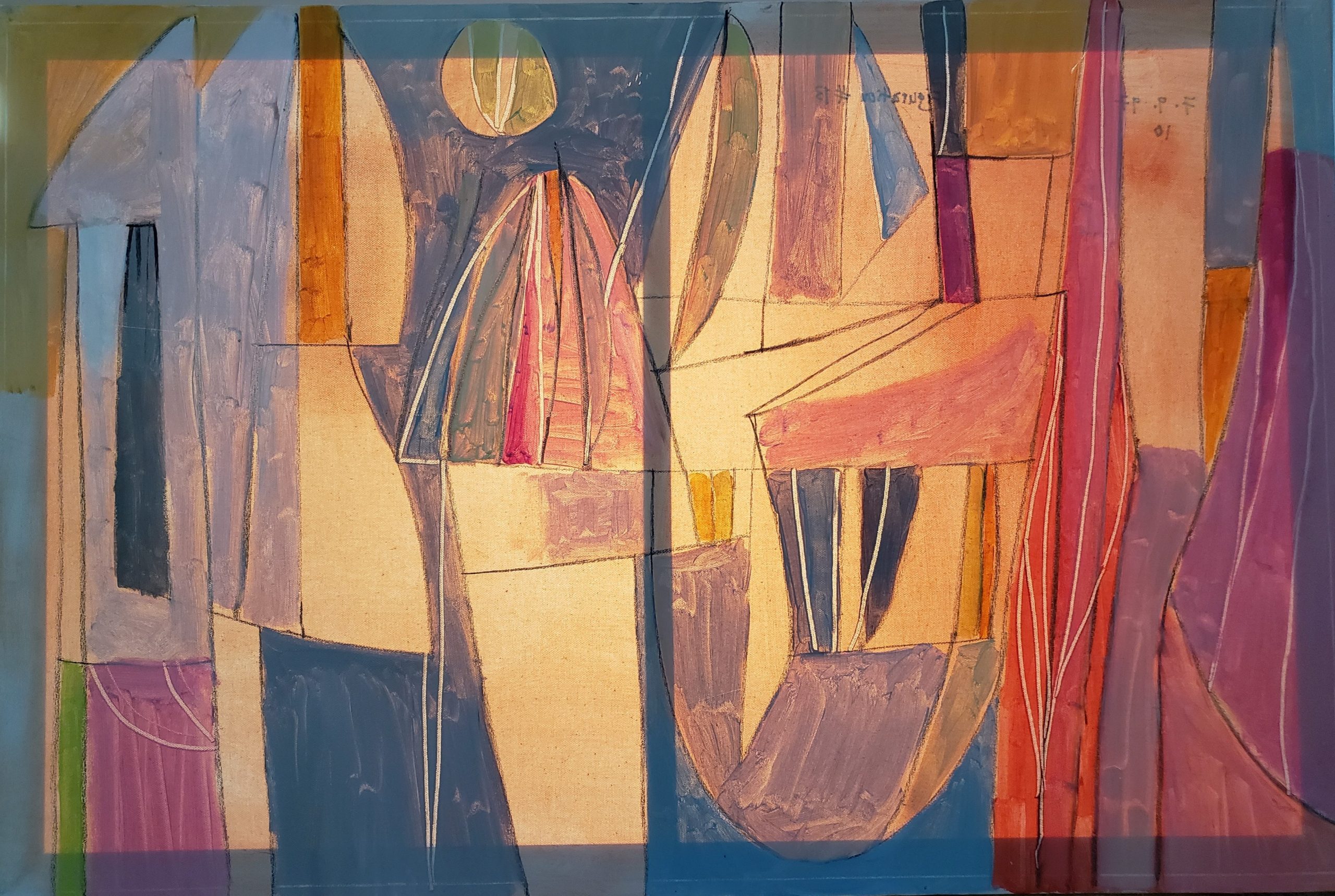


 Join the
Join the